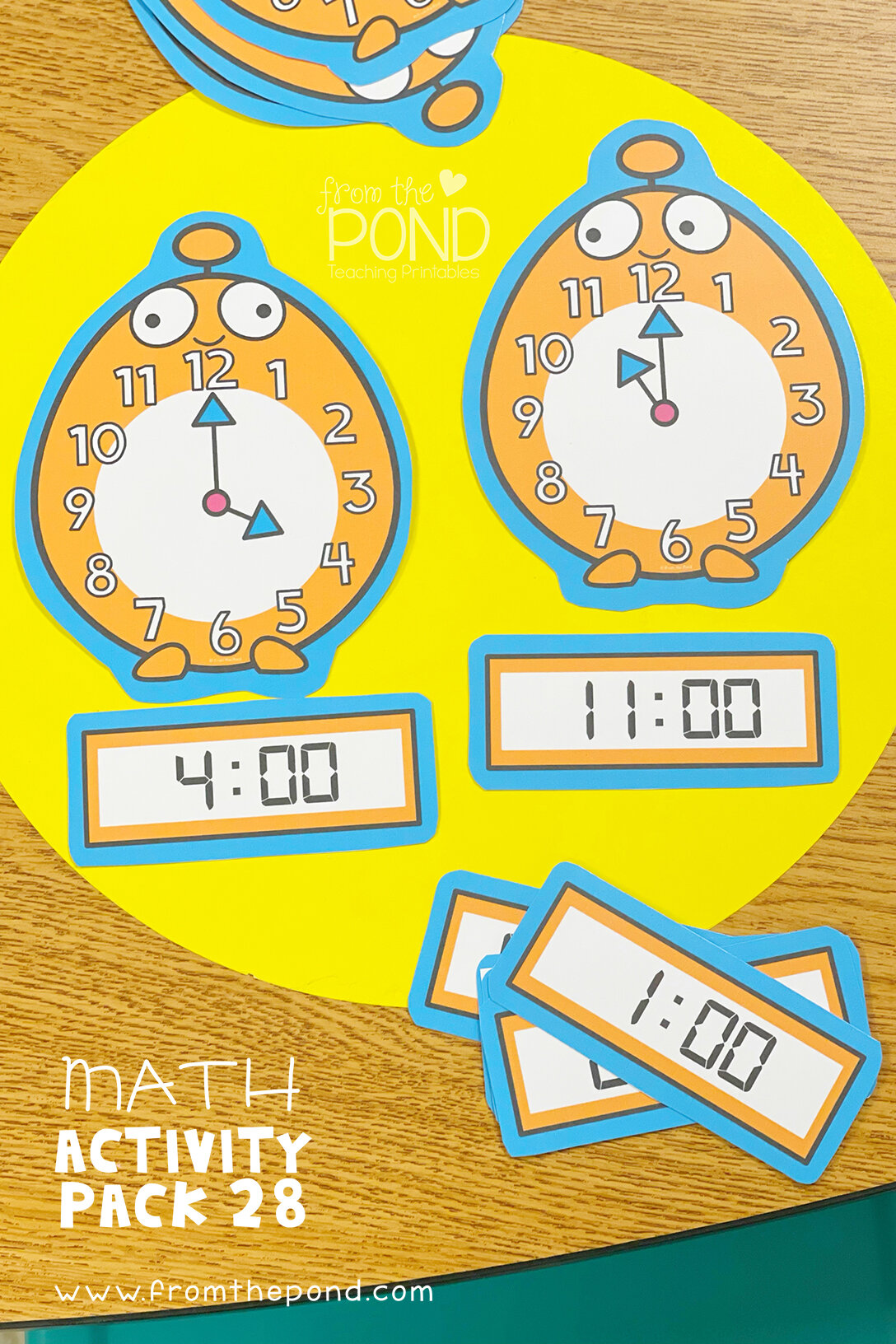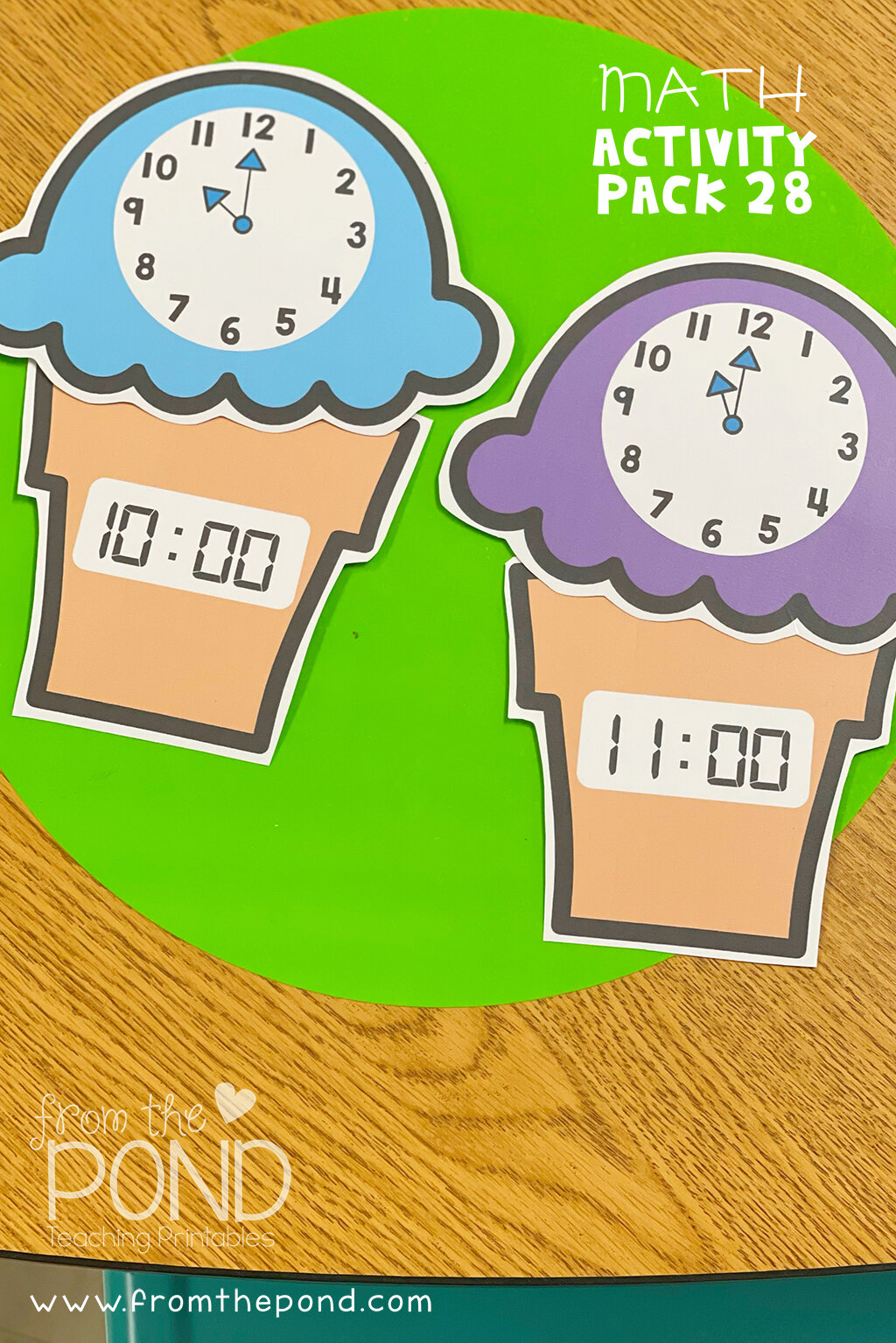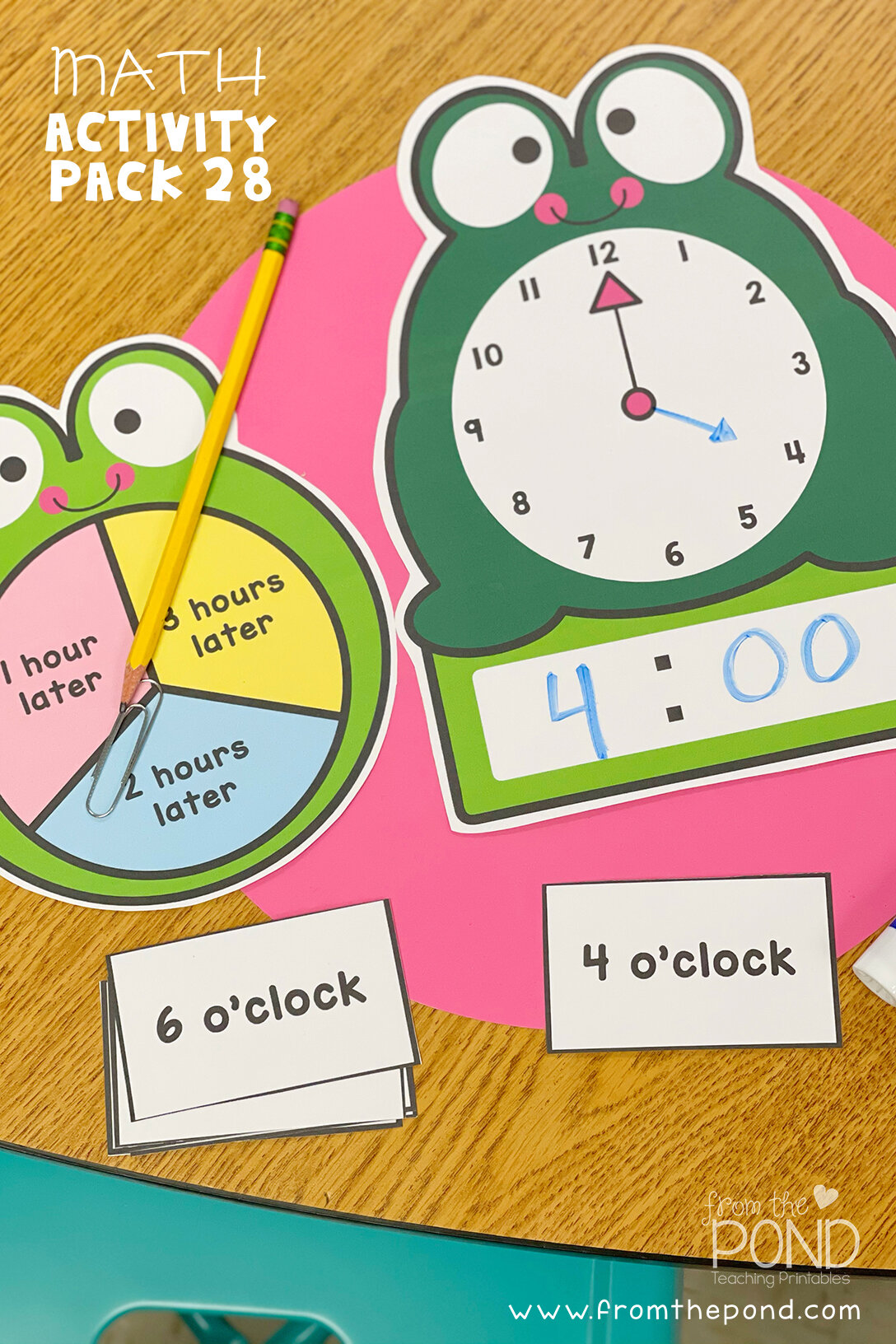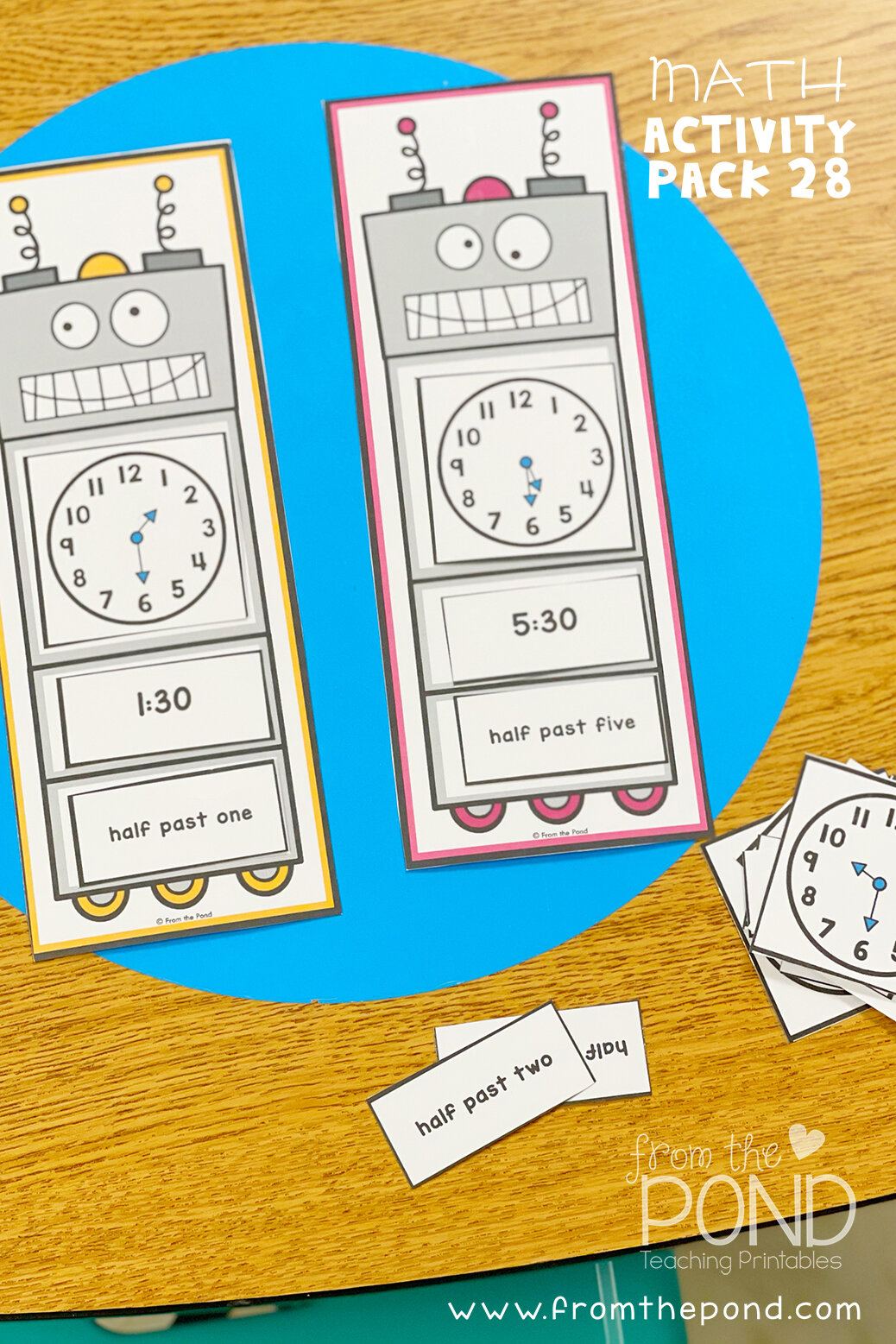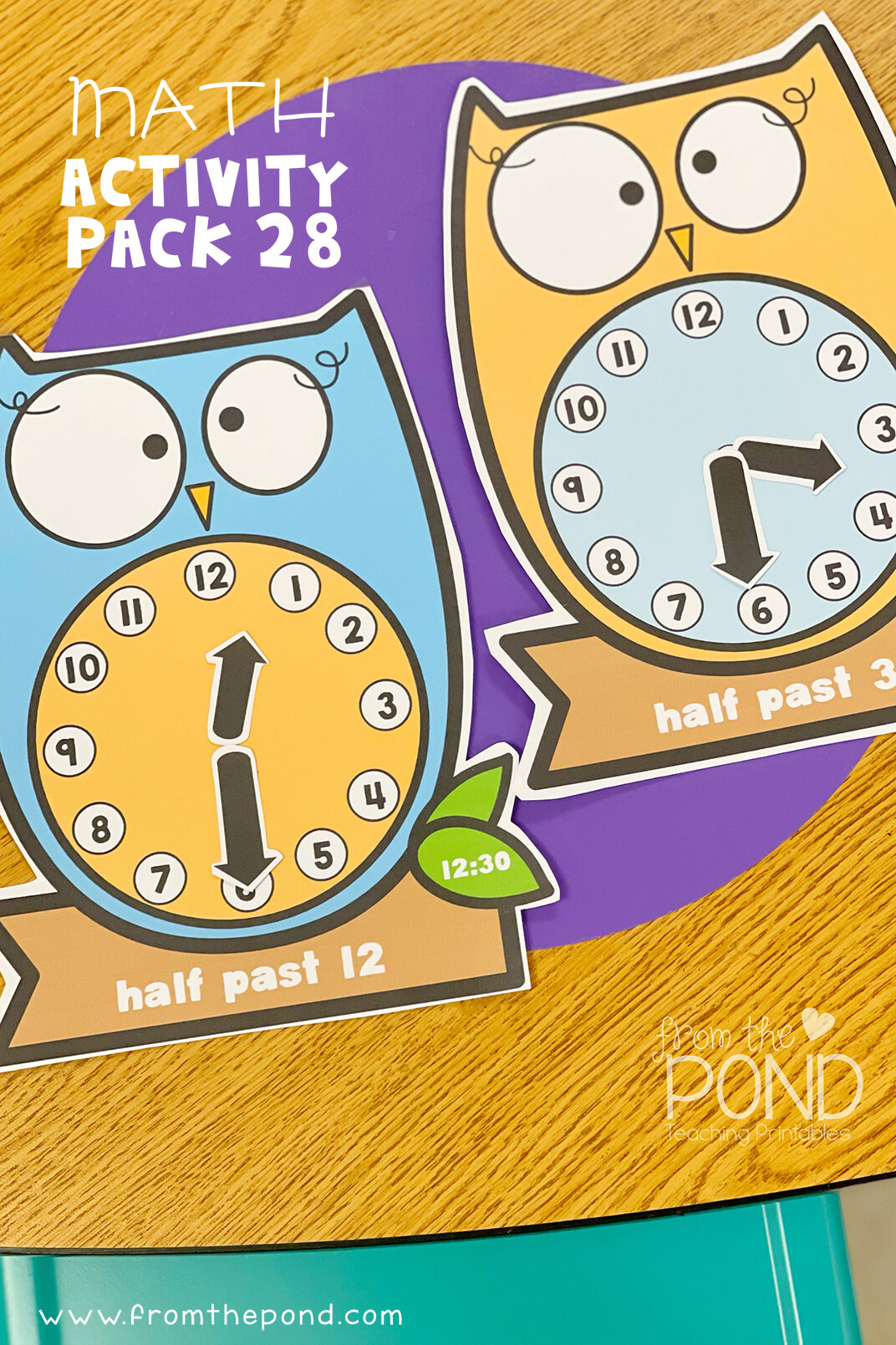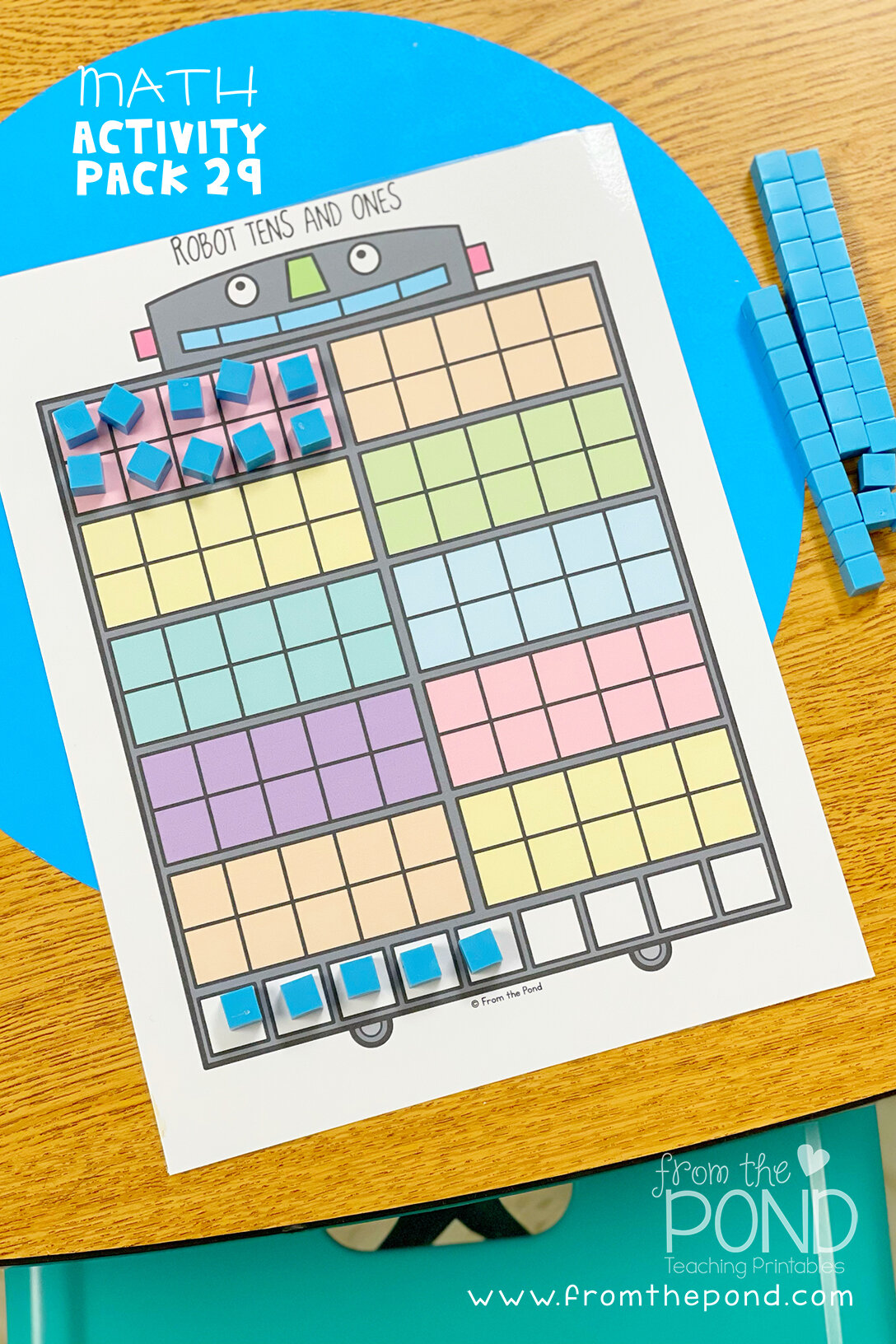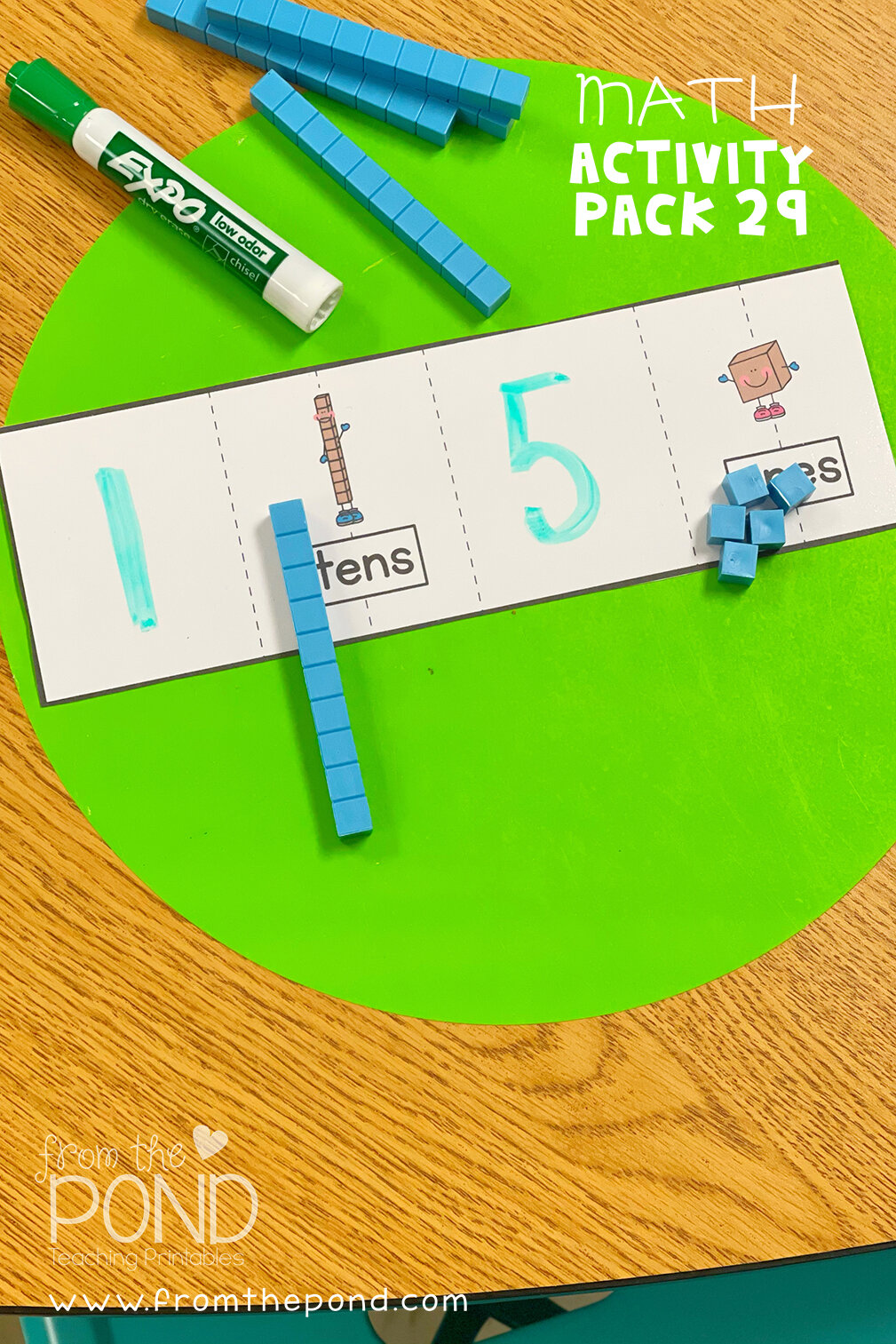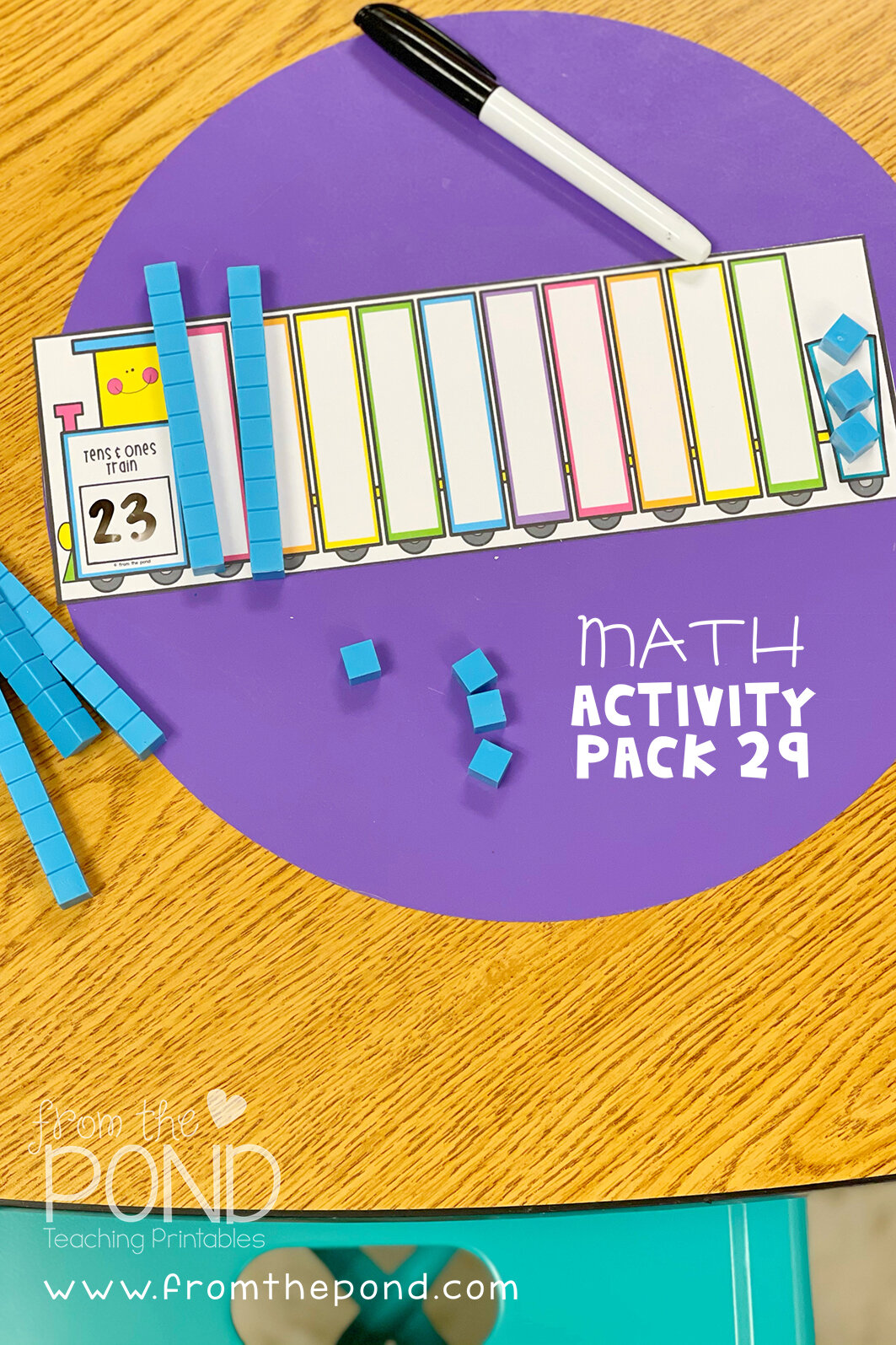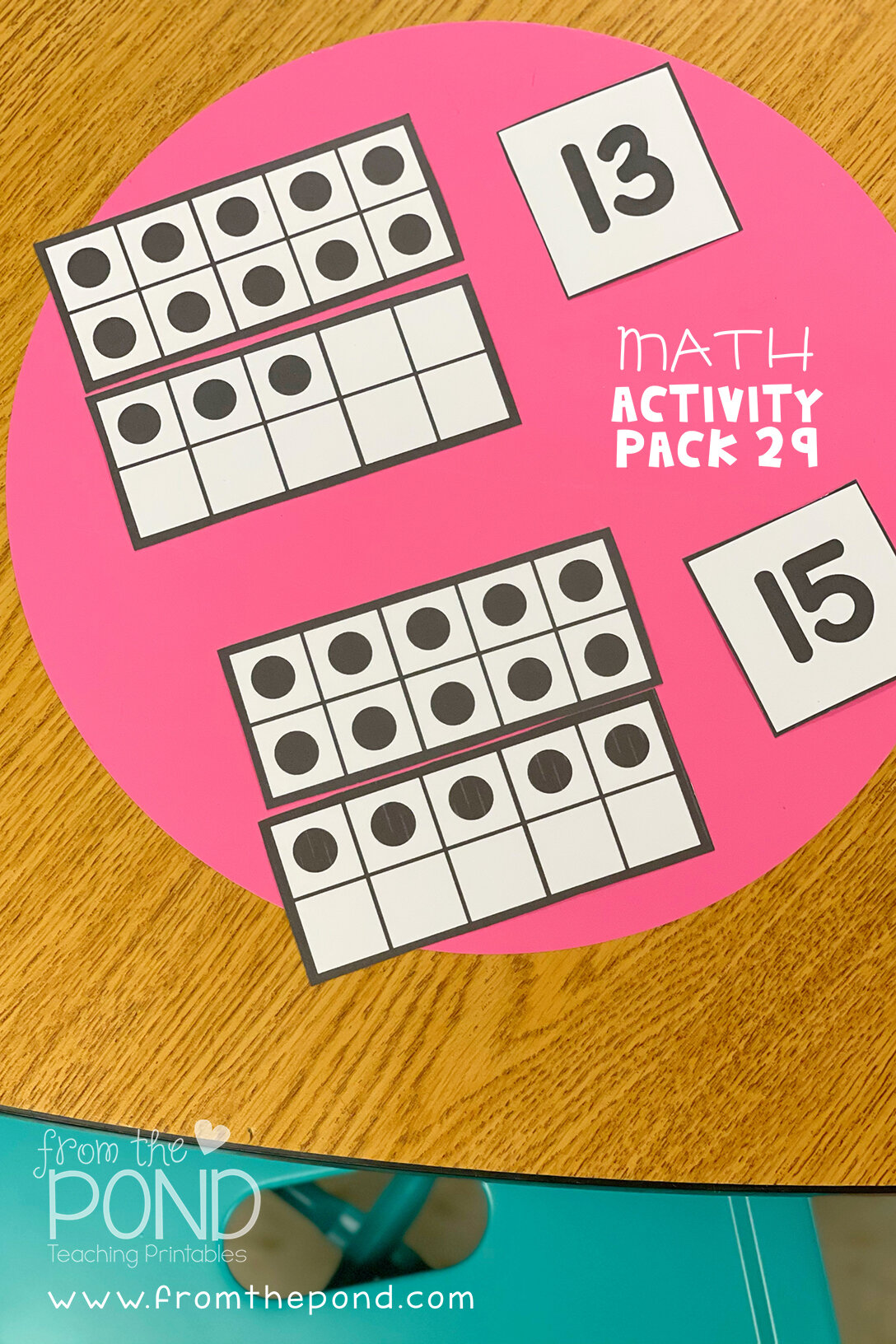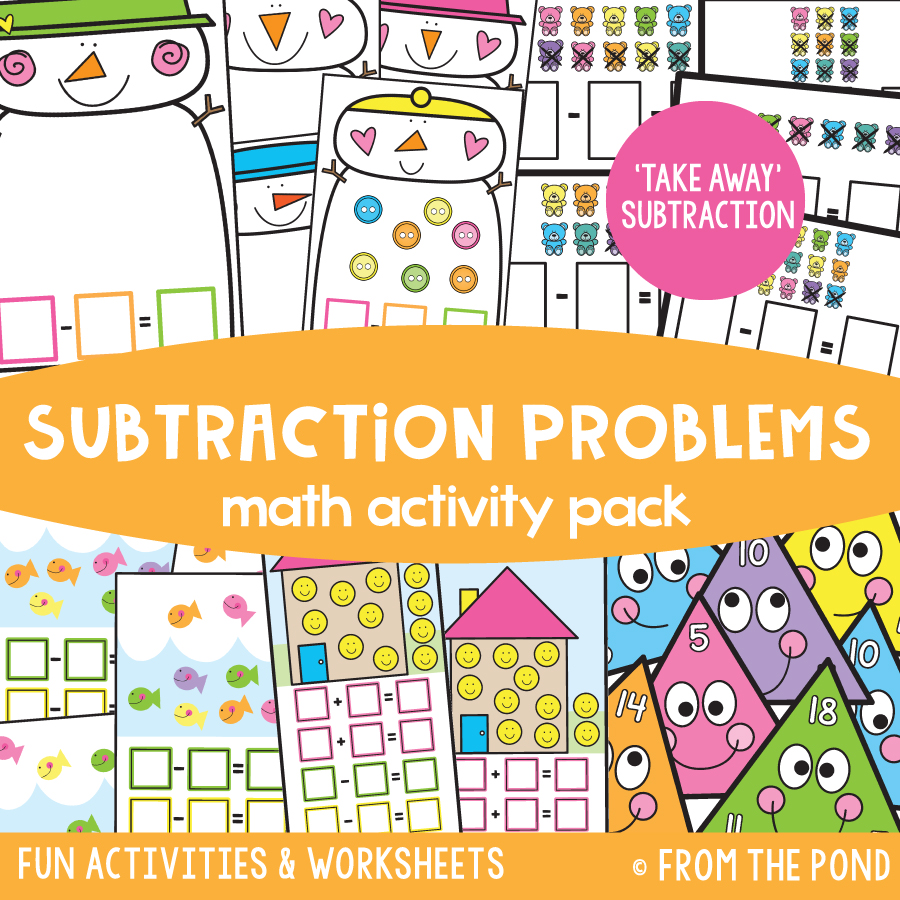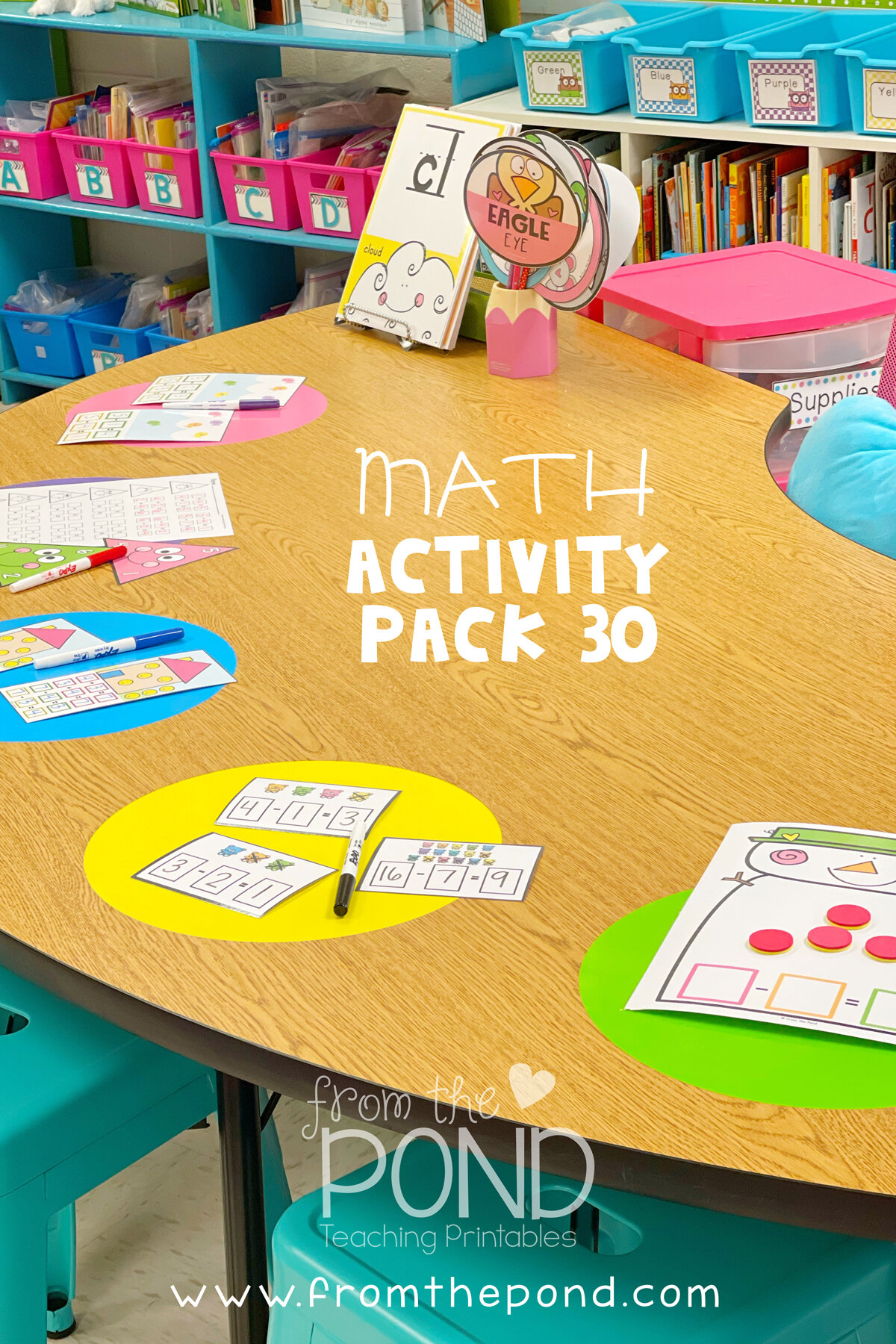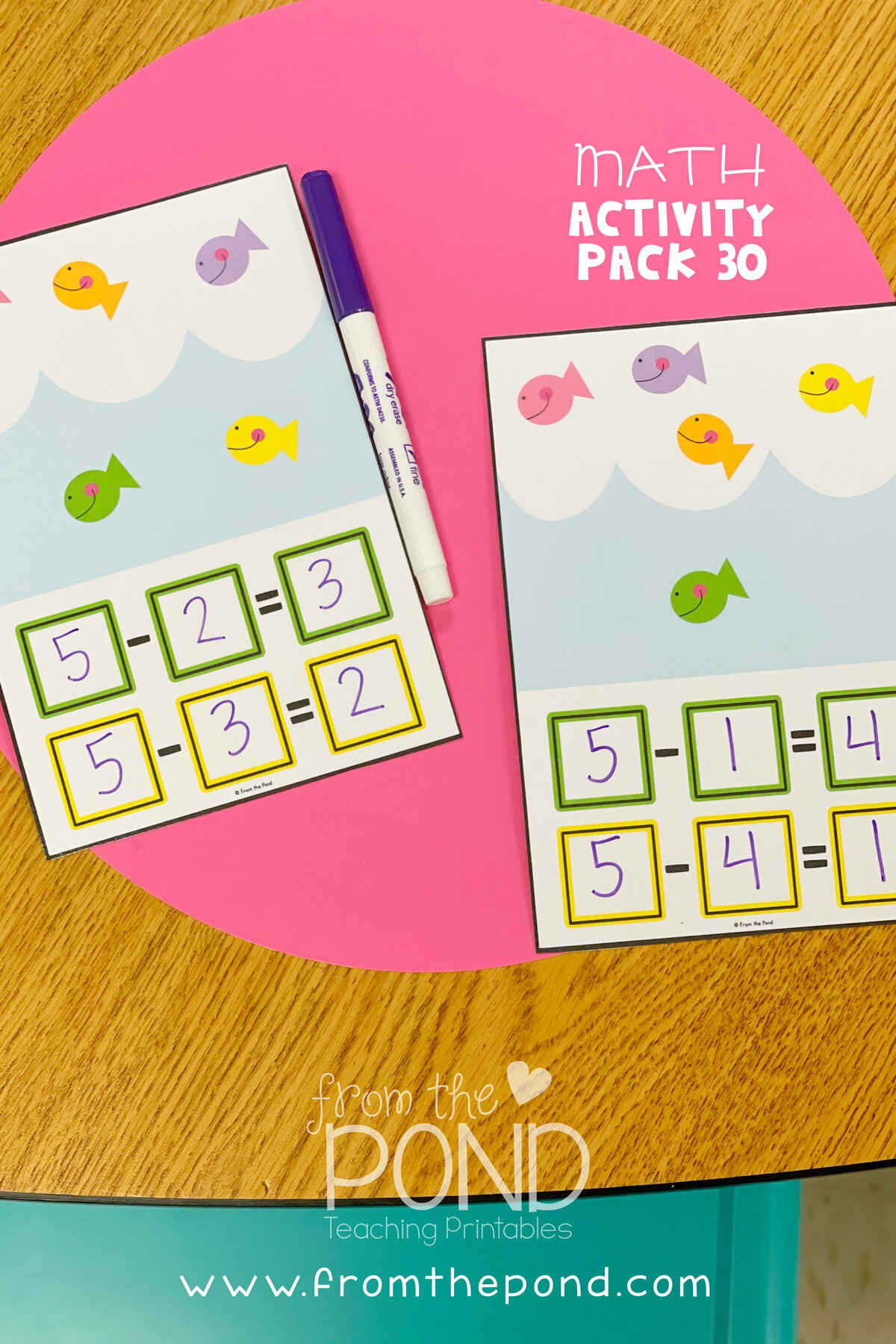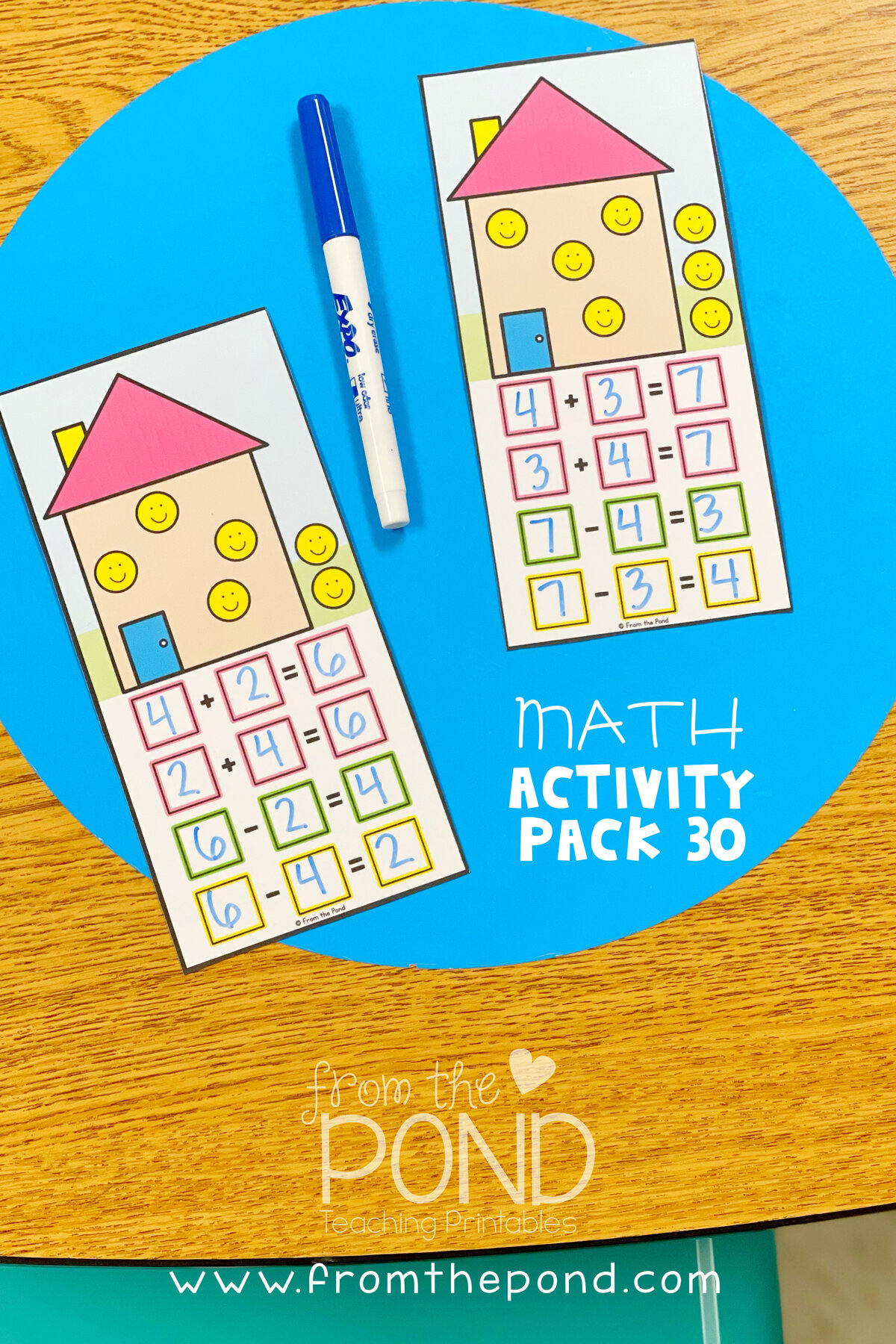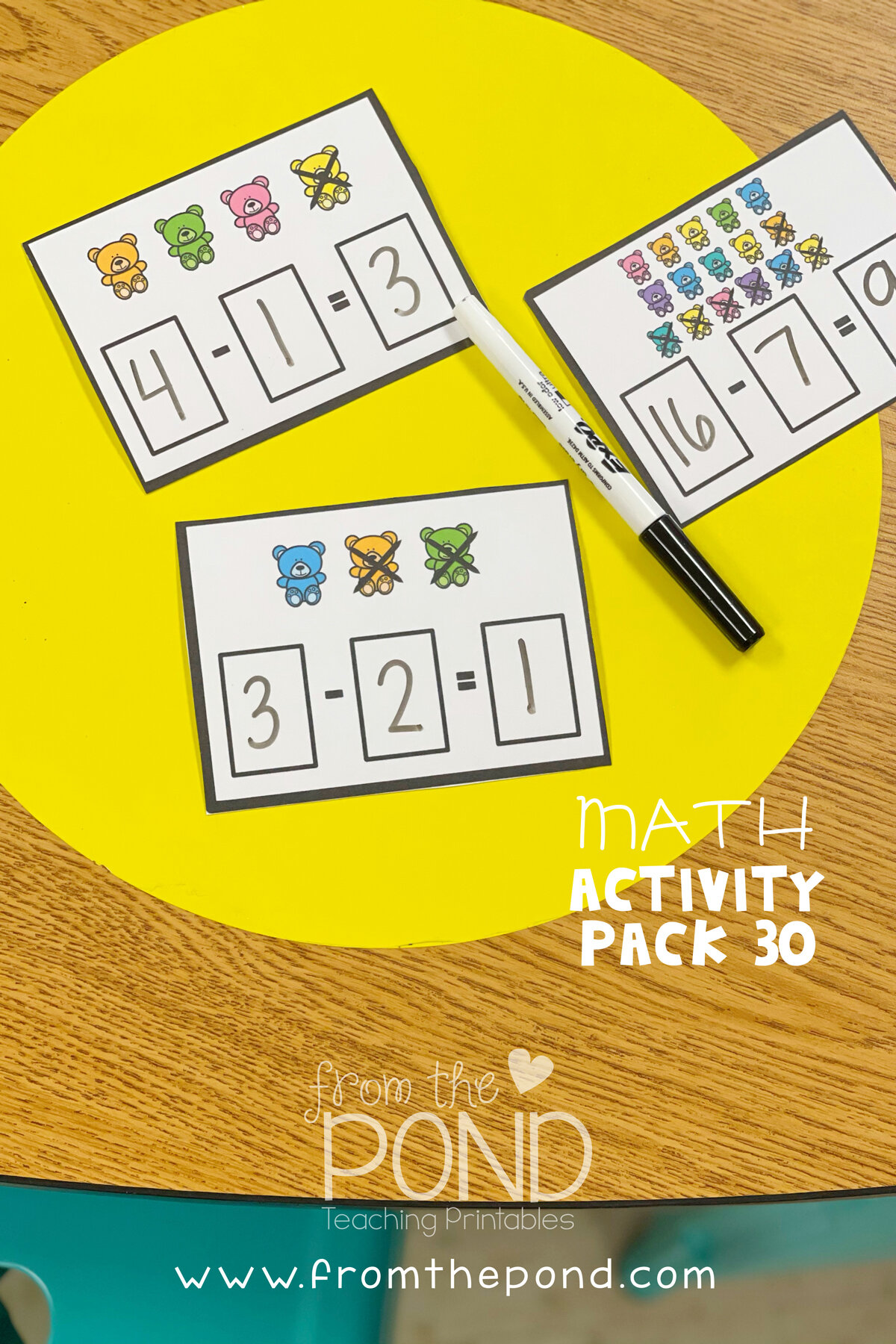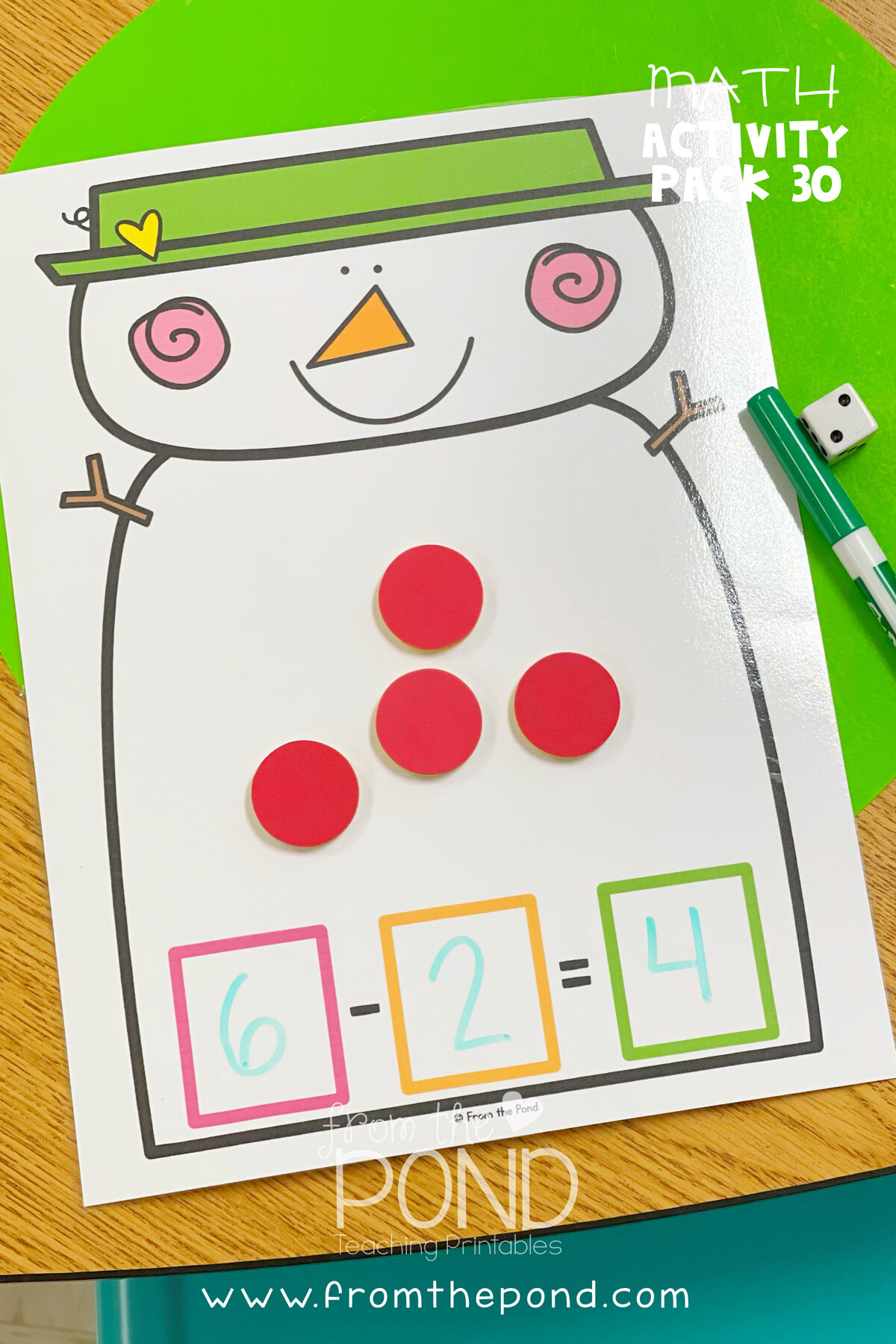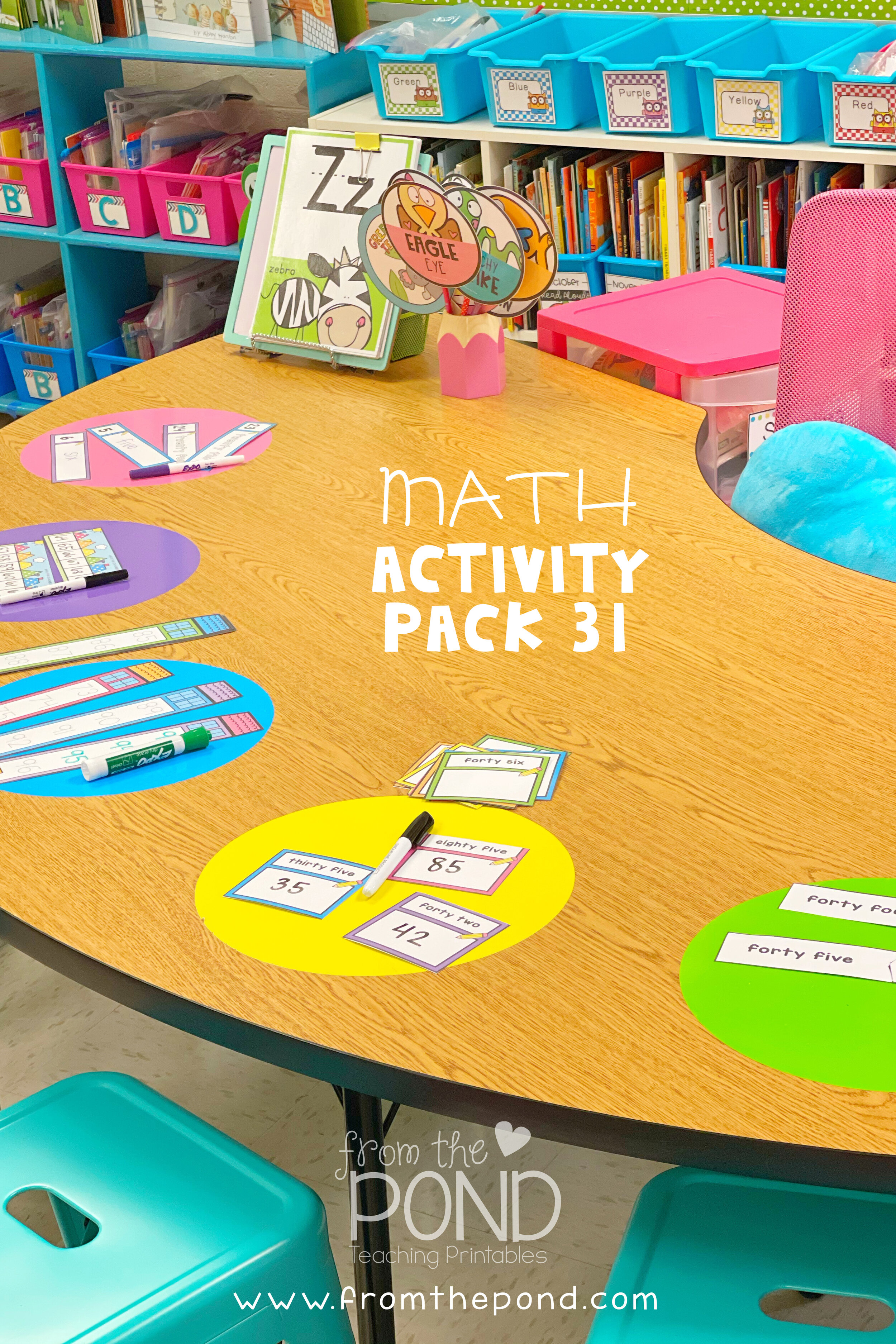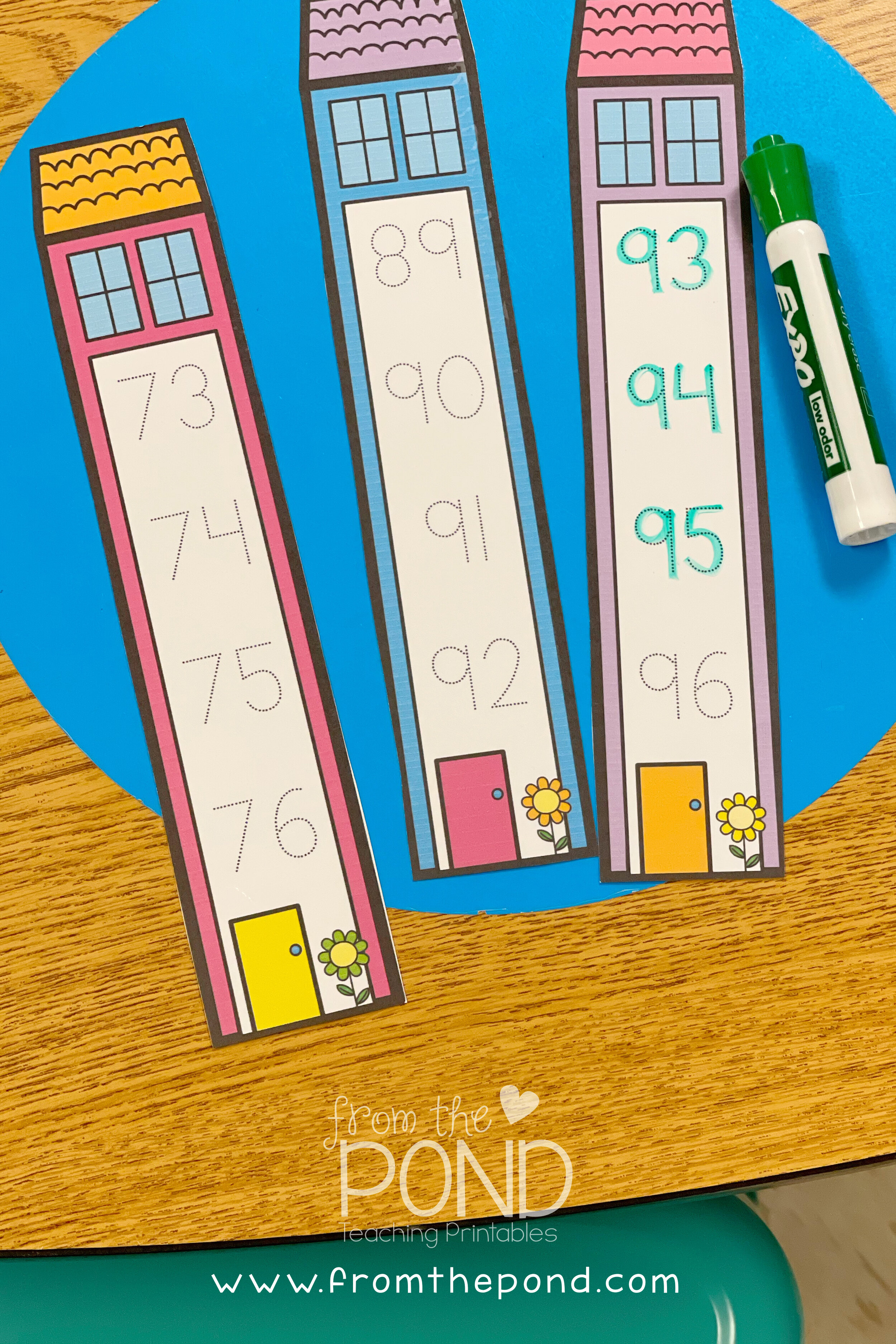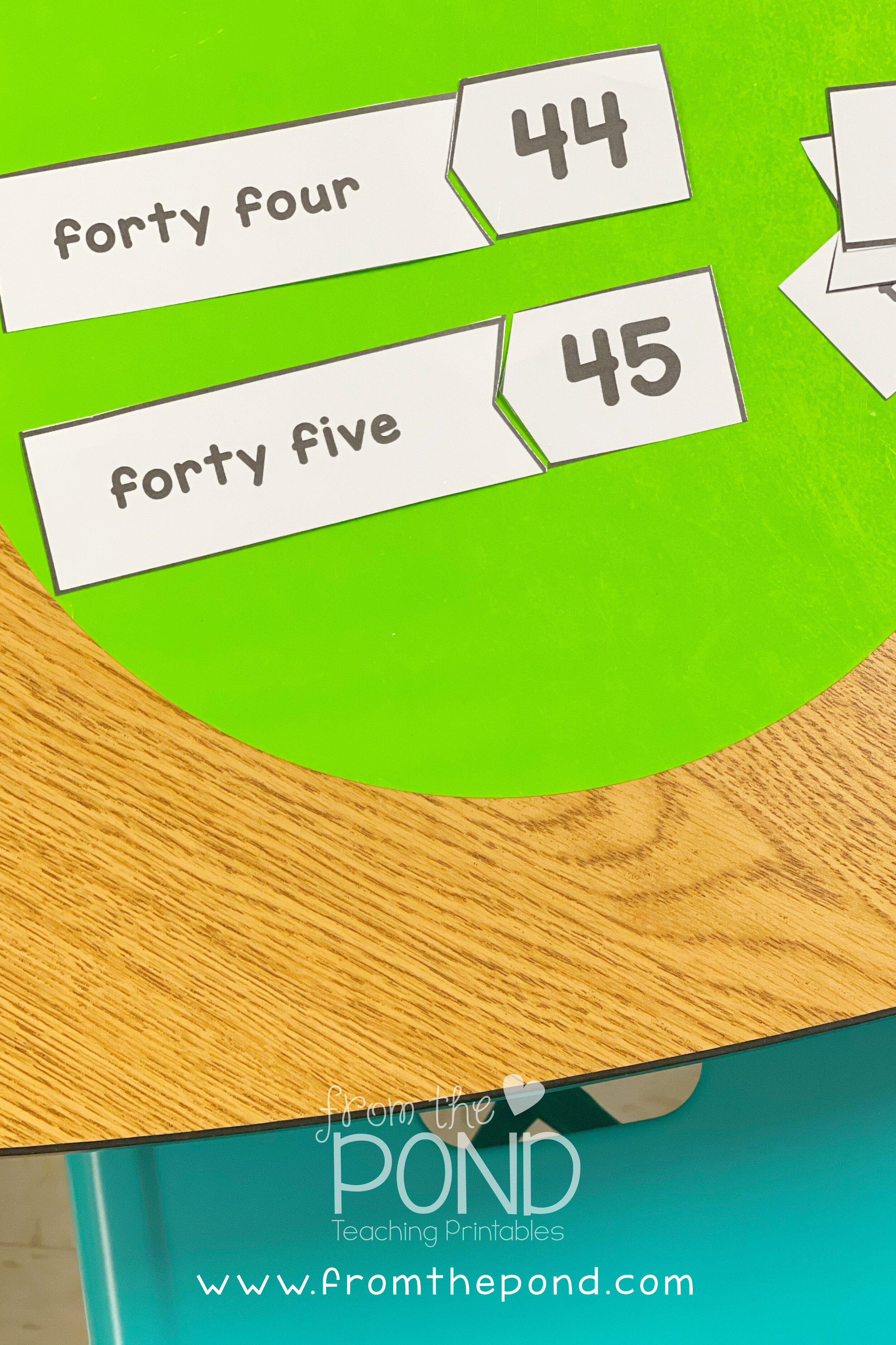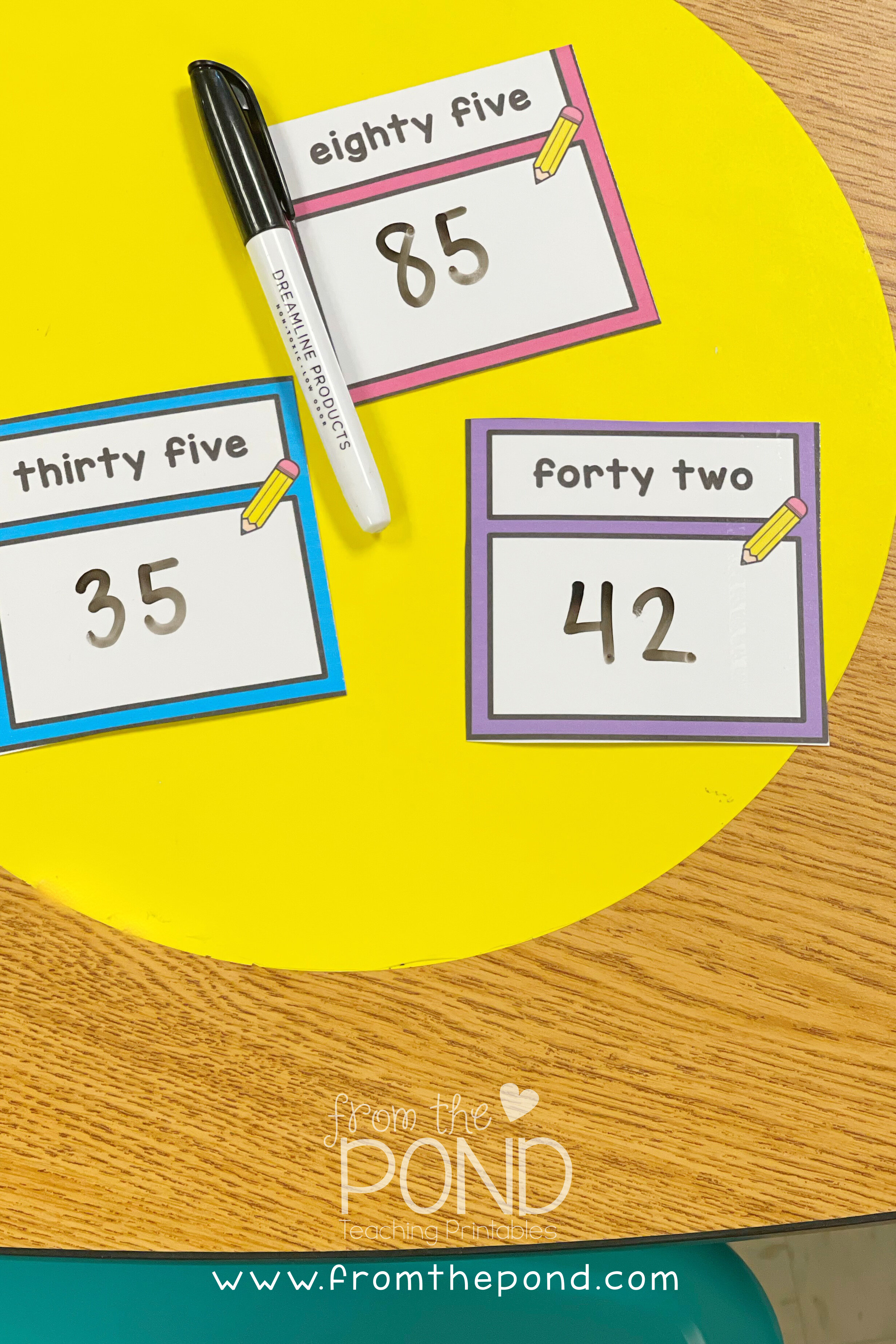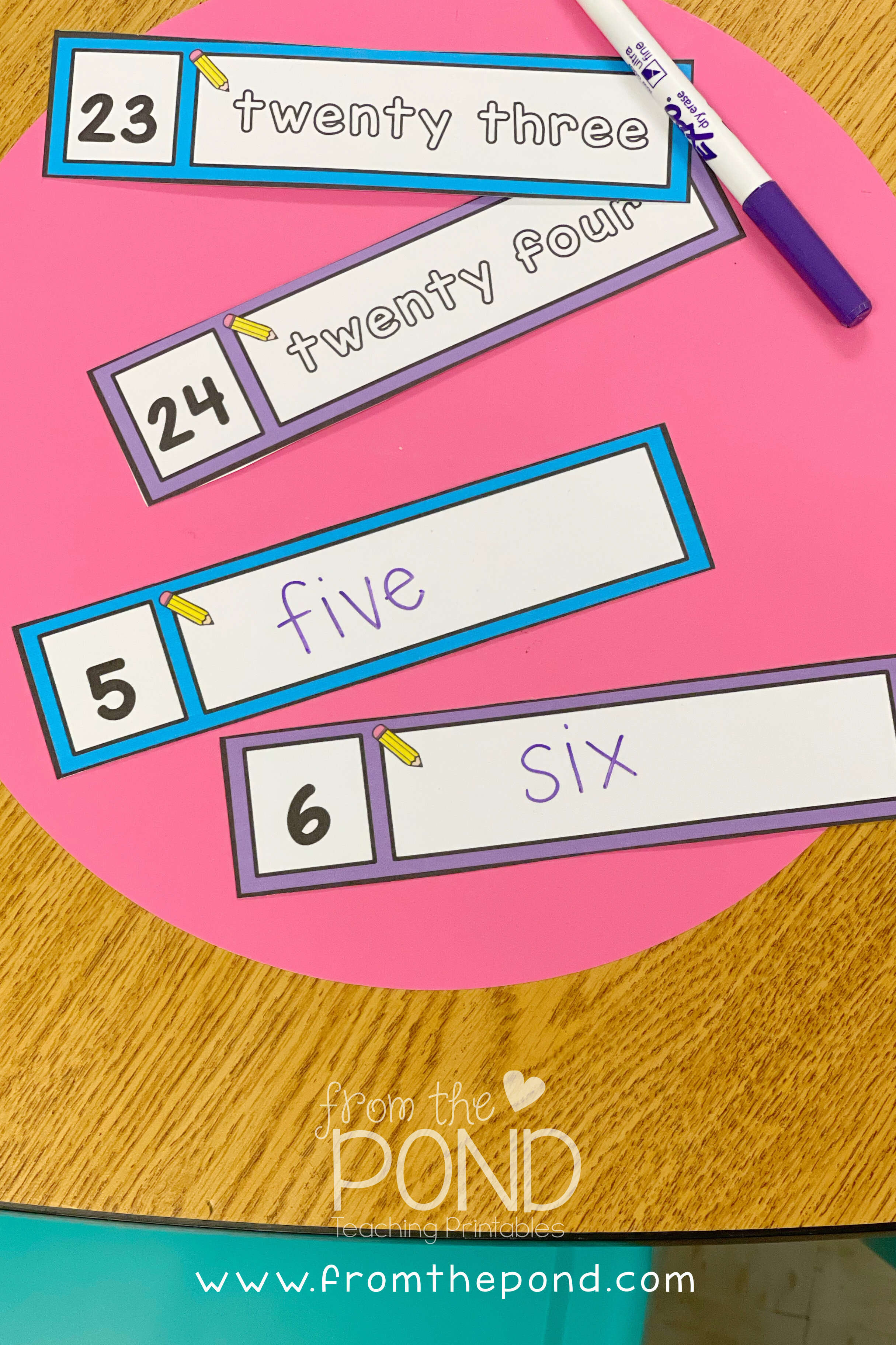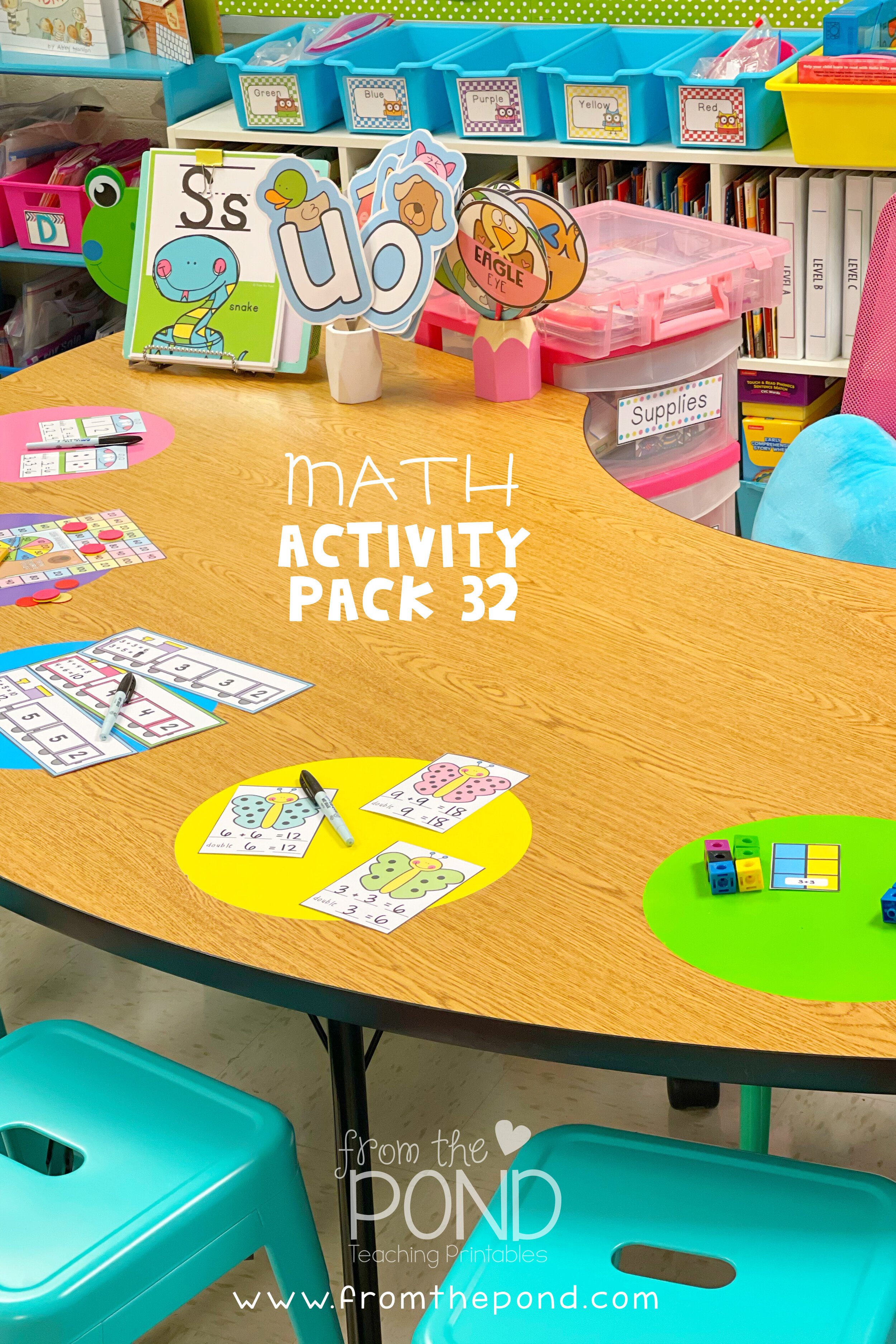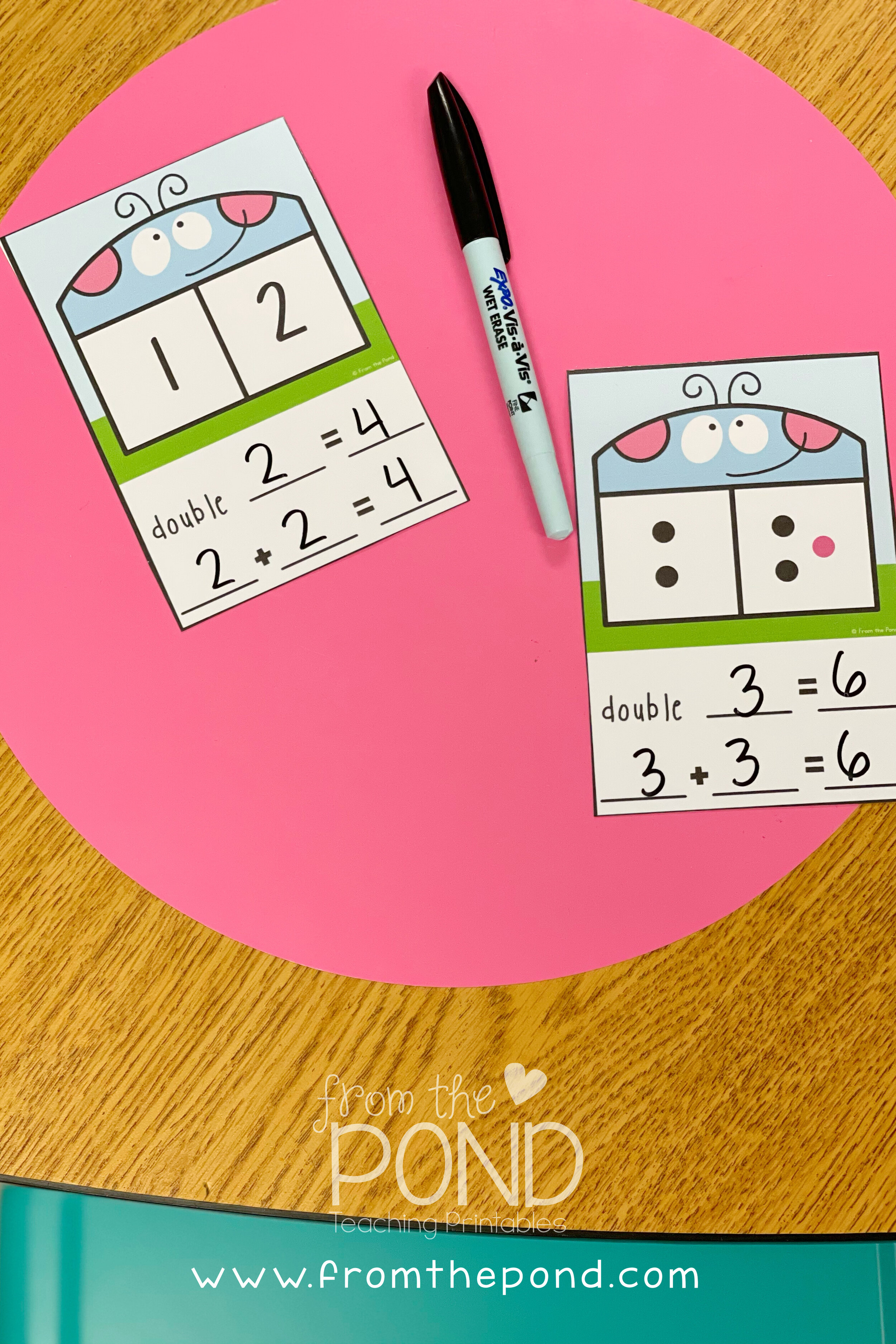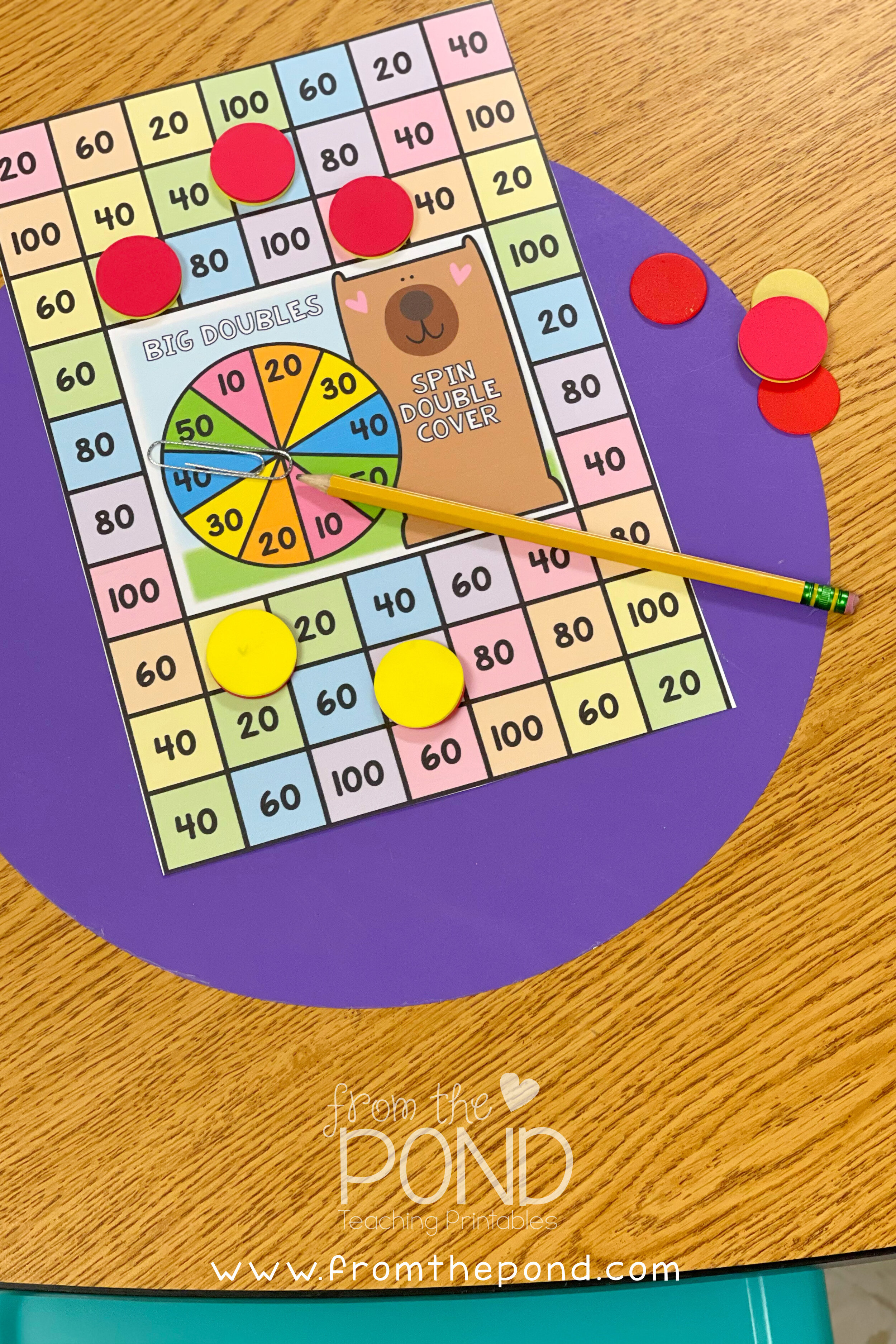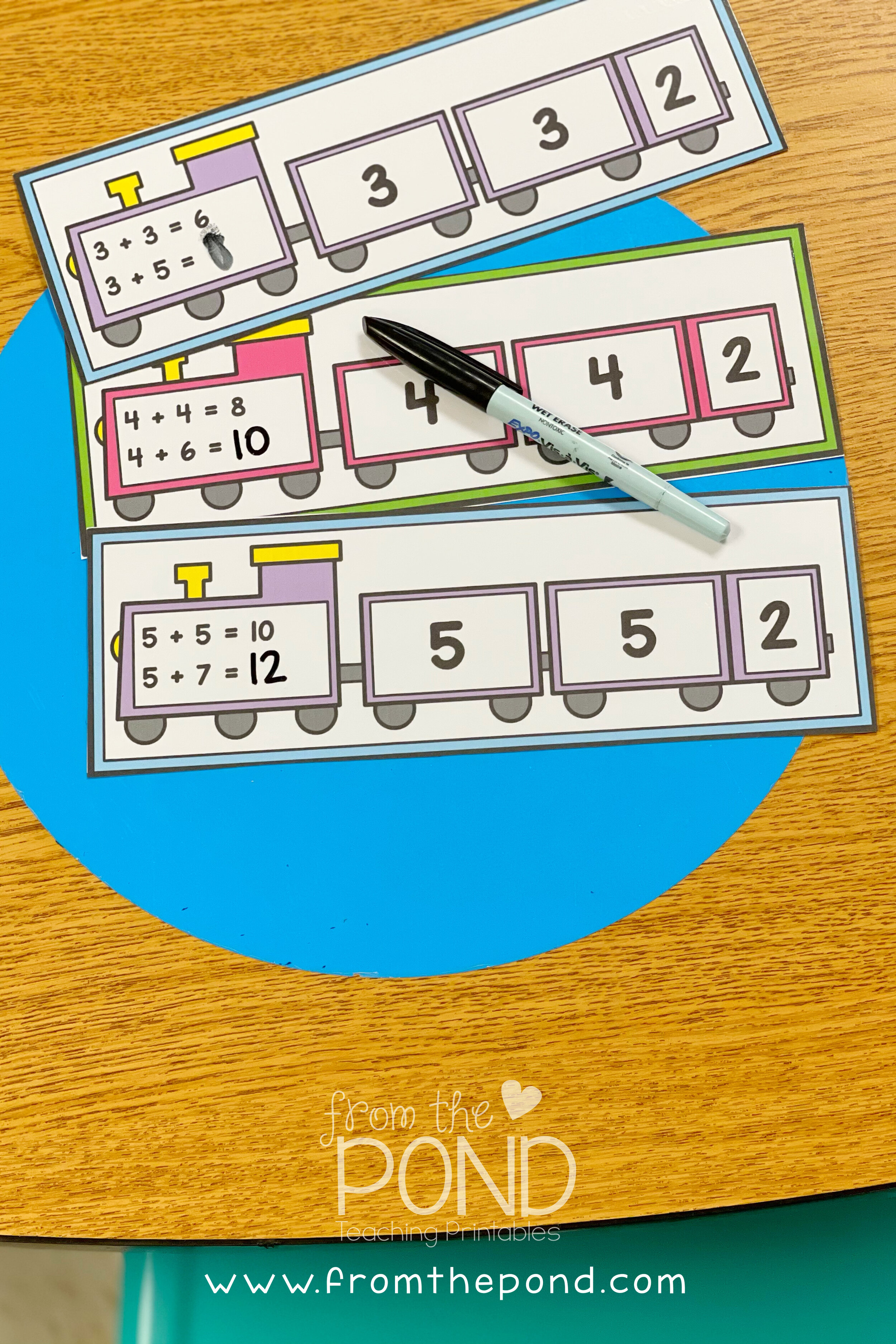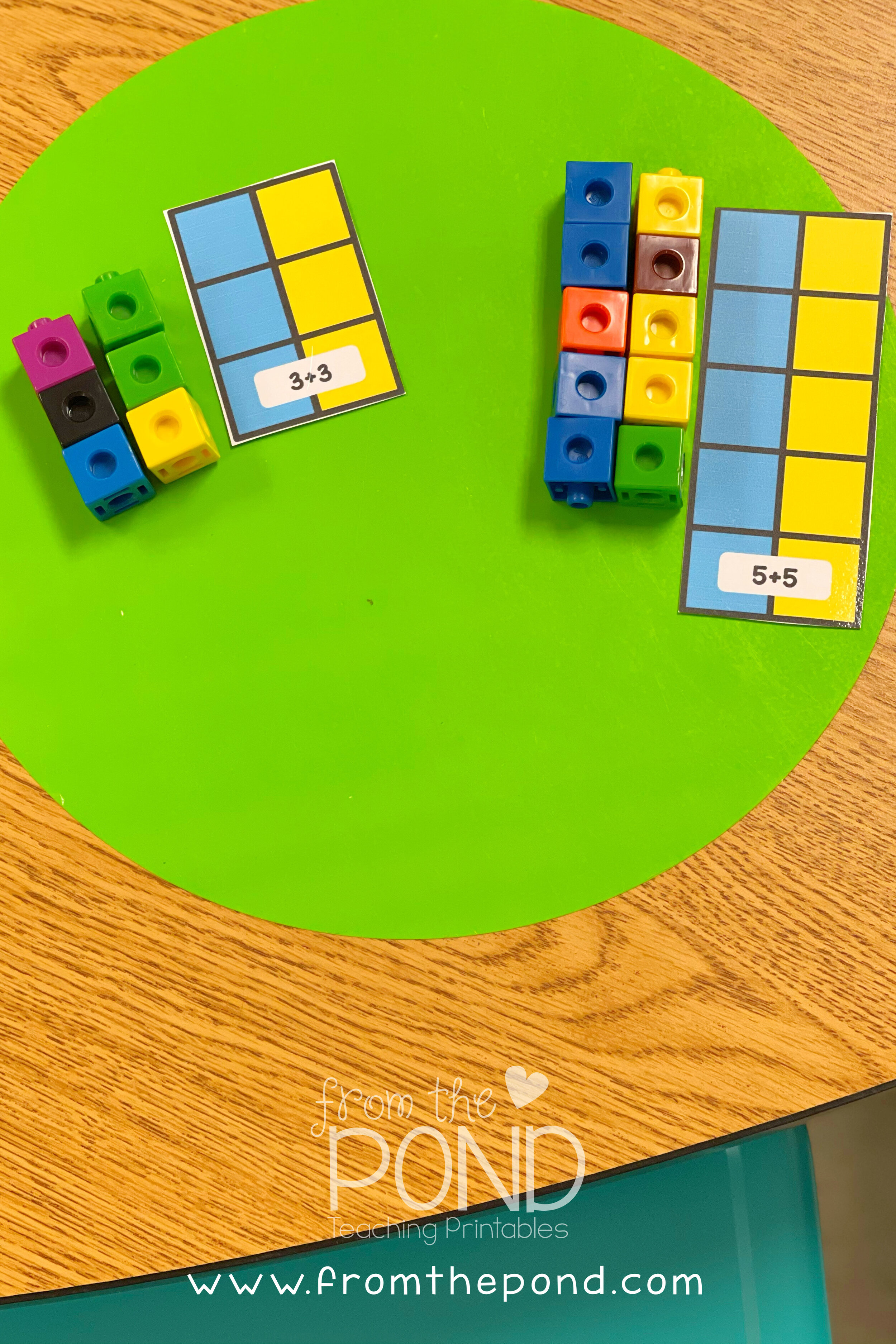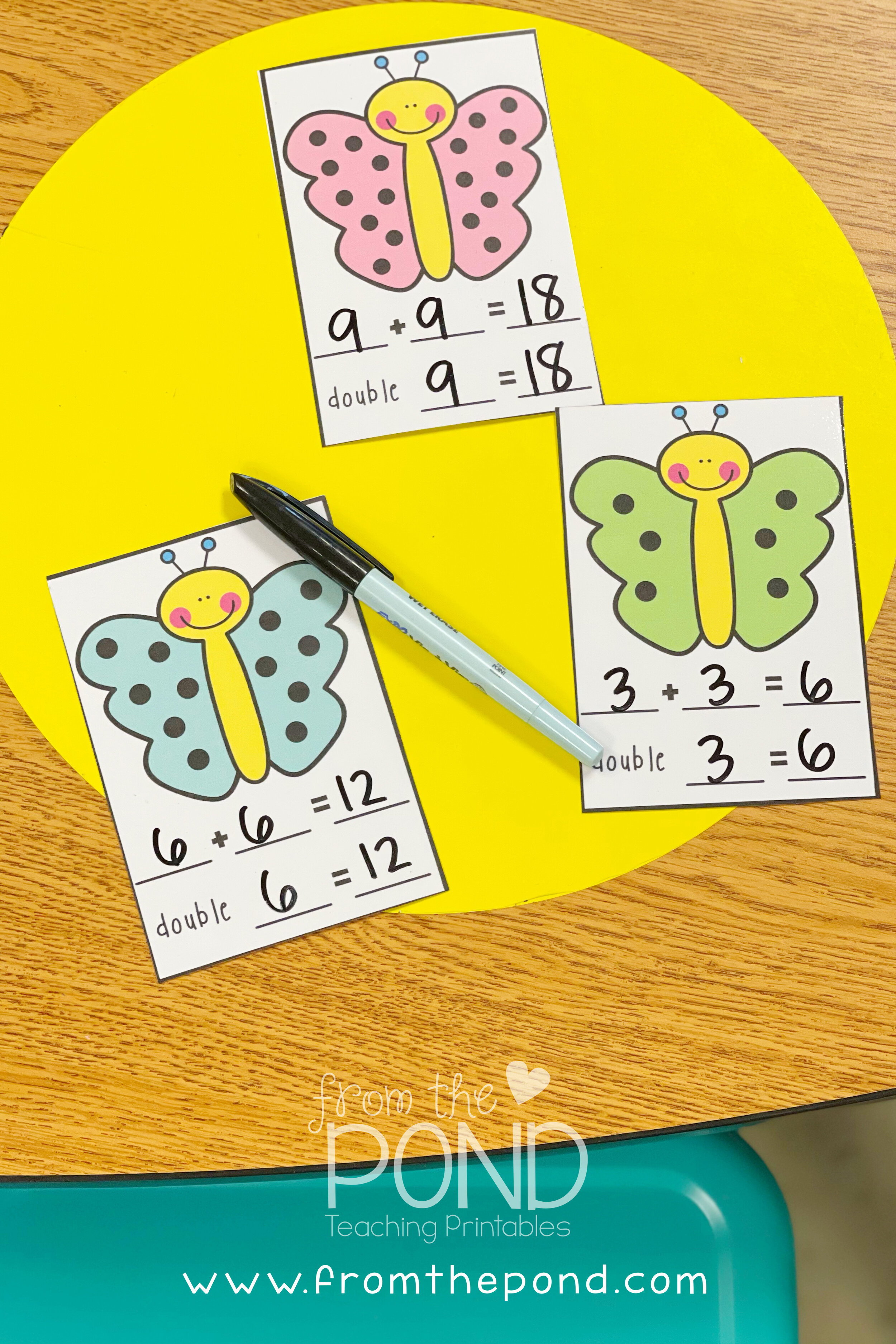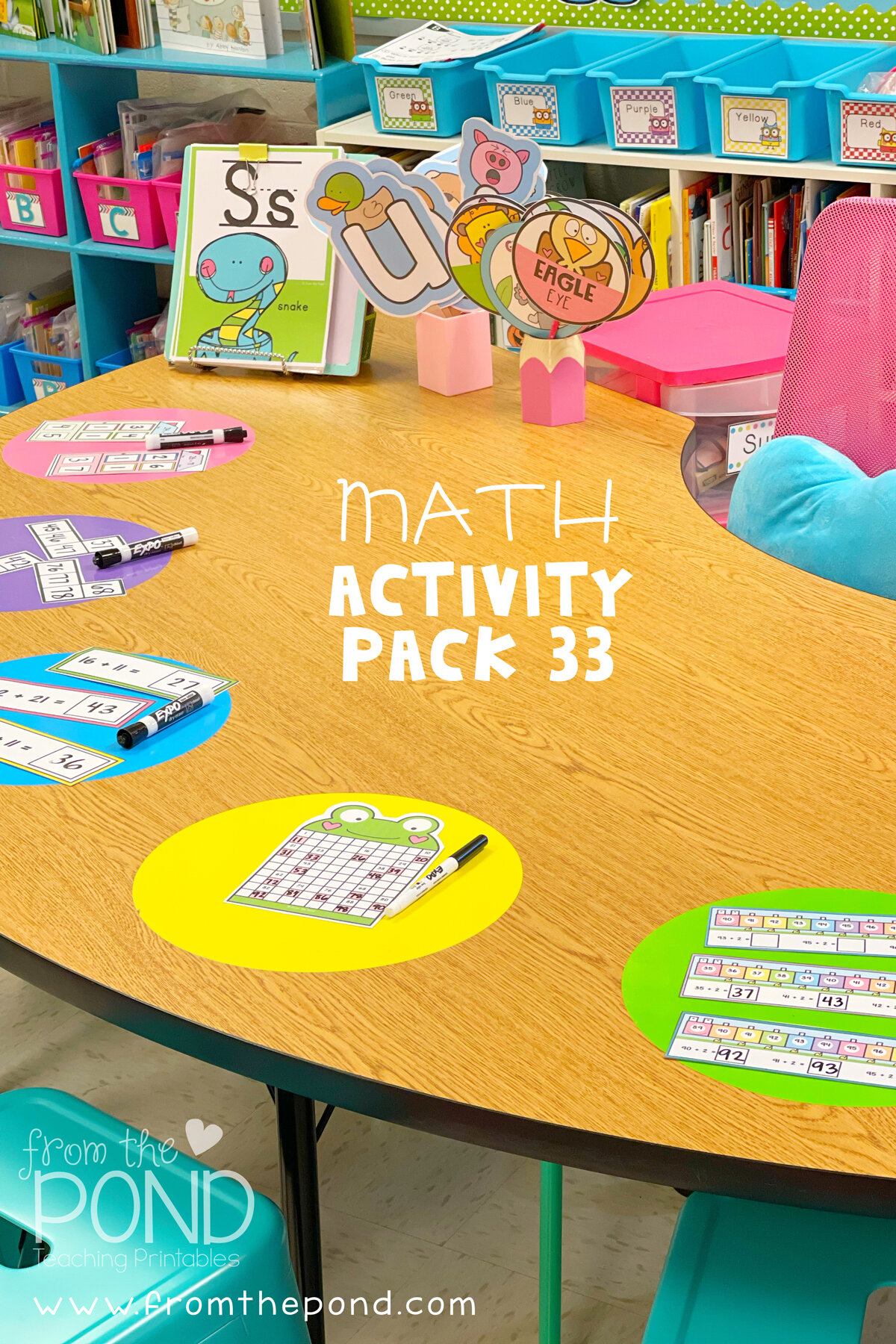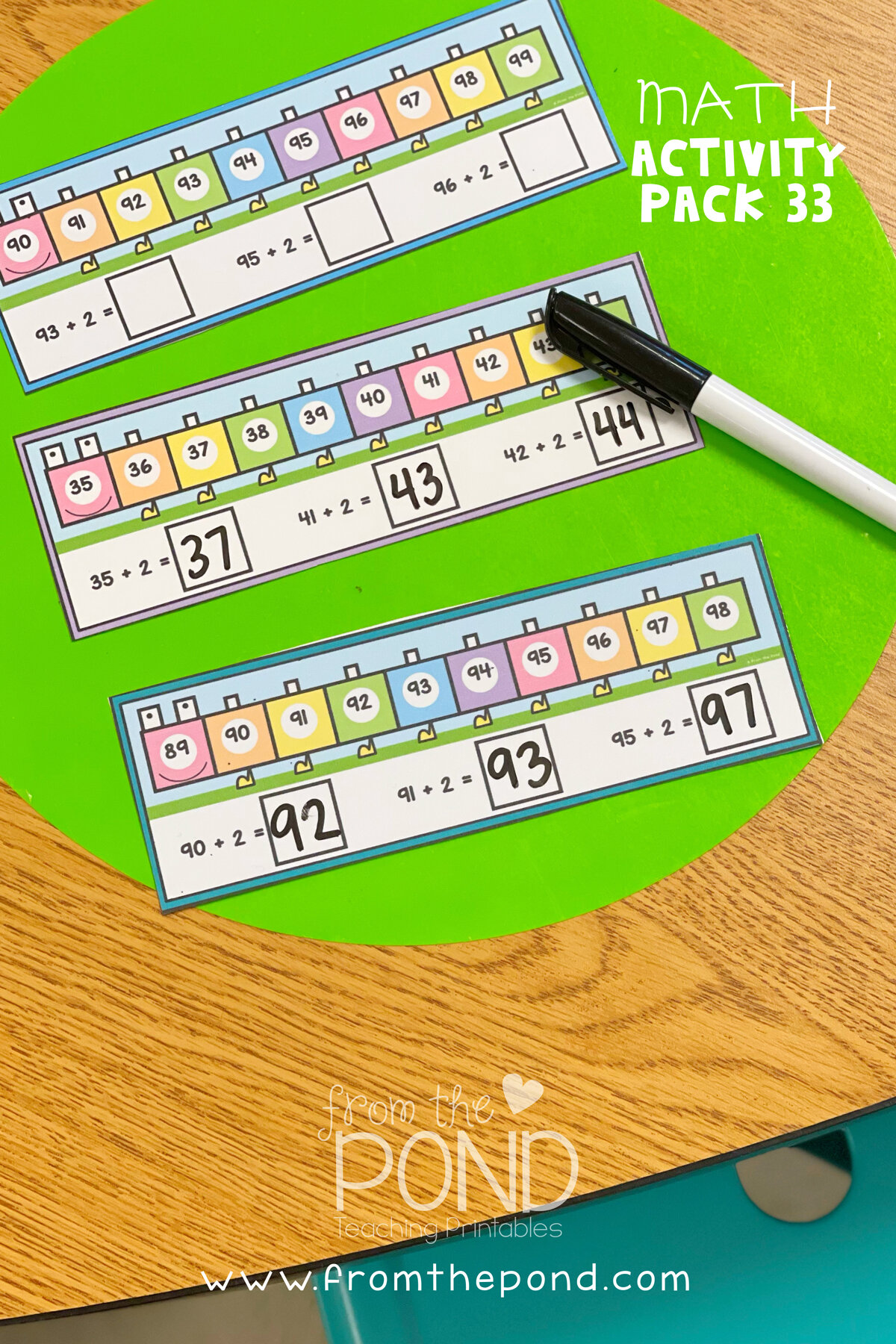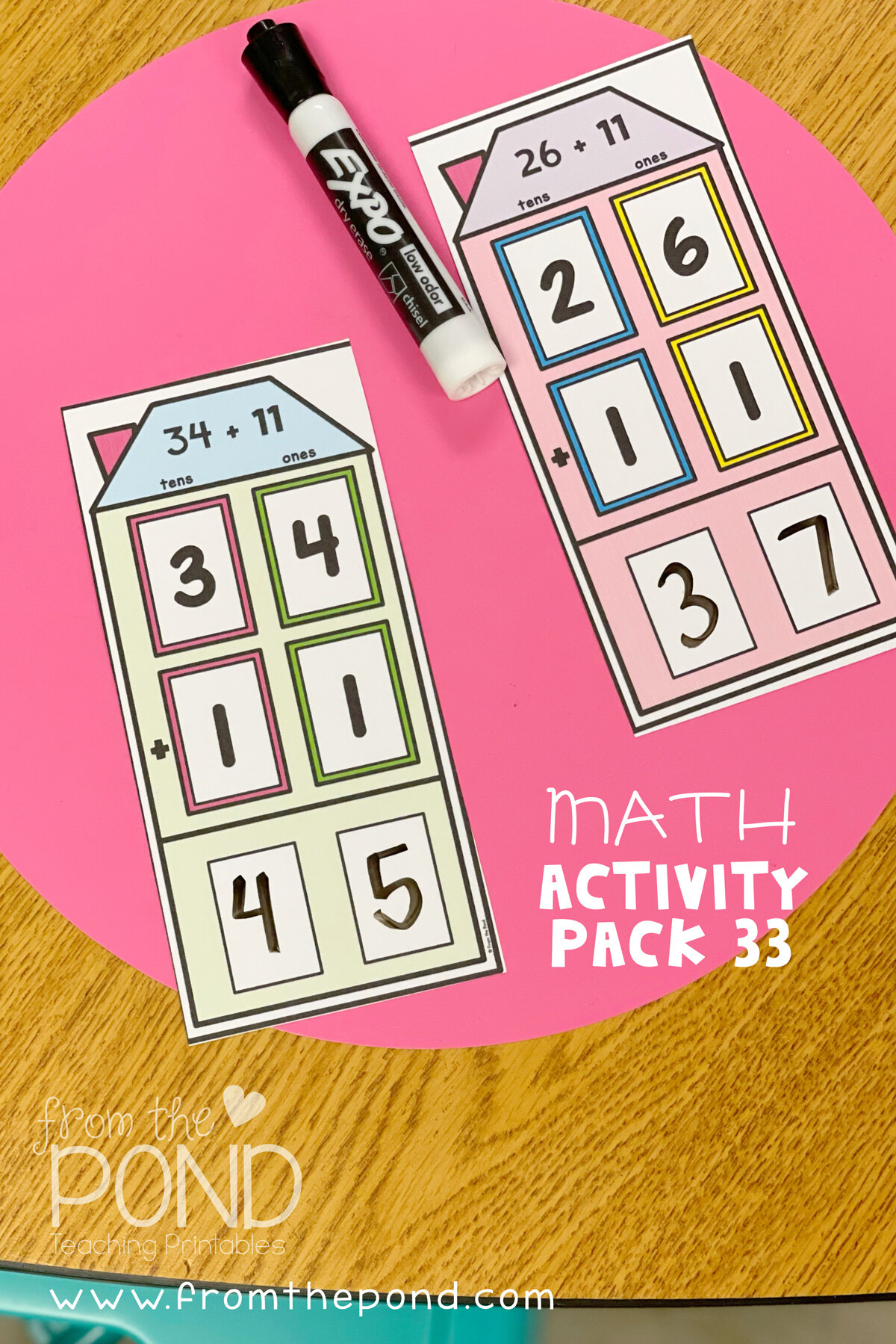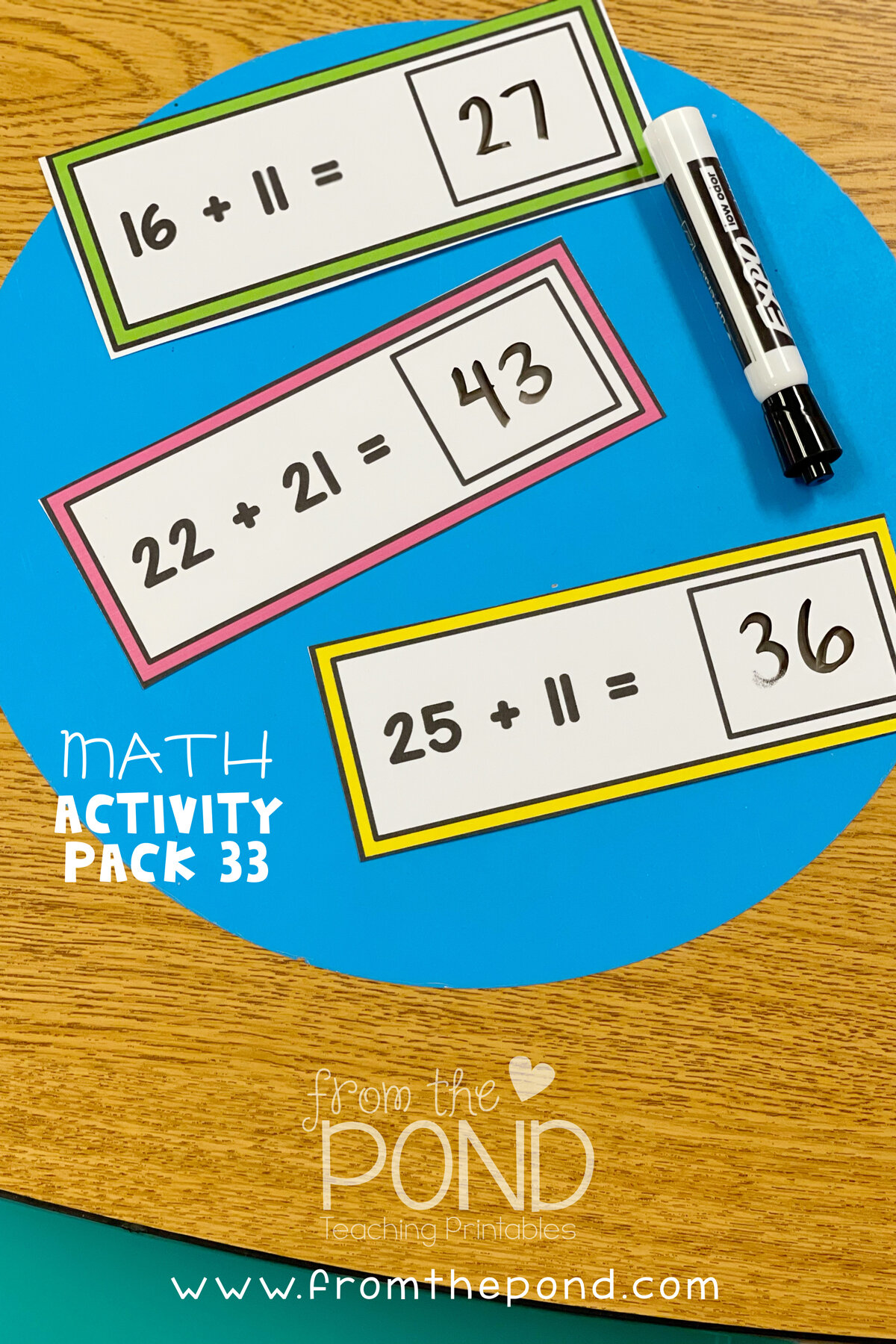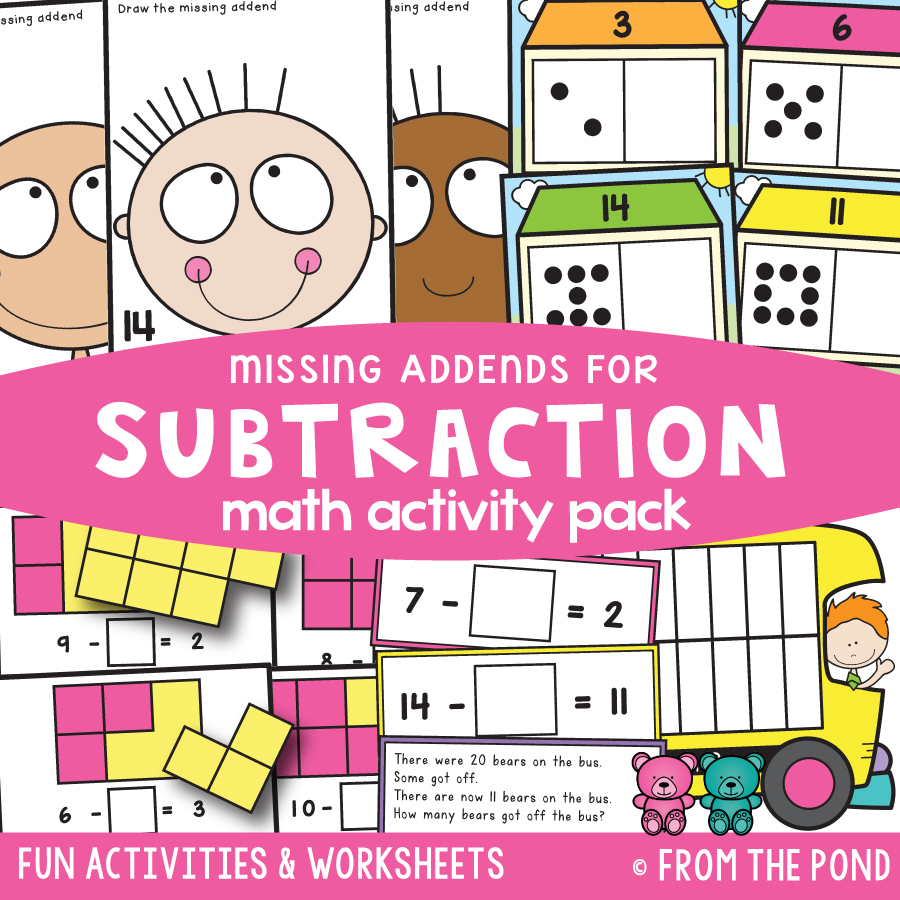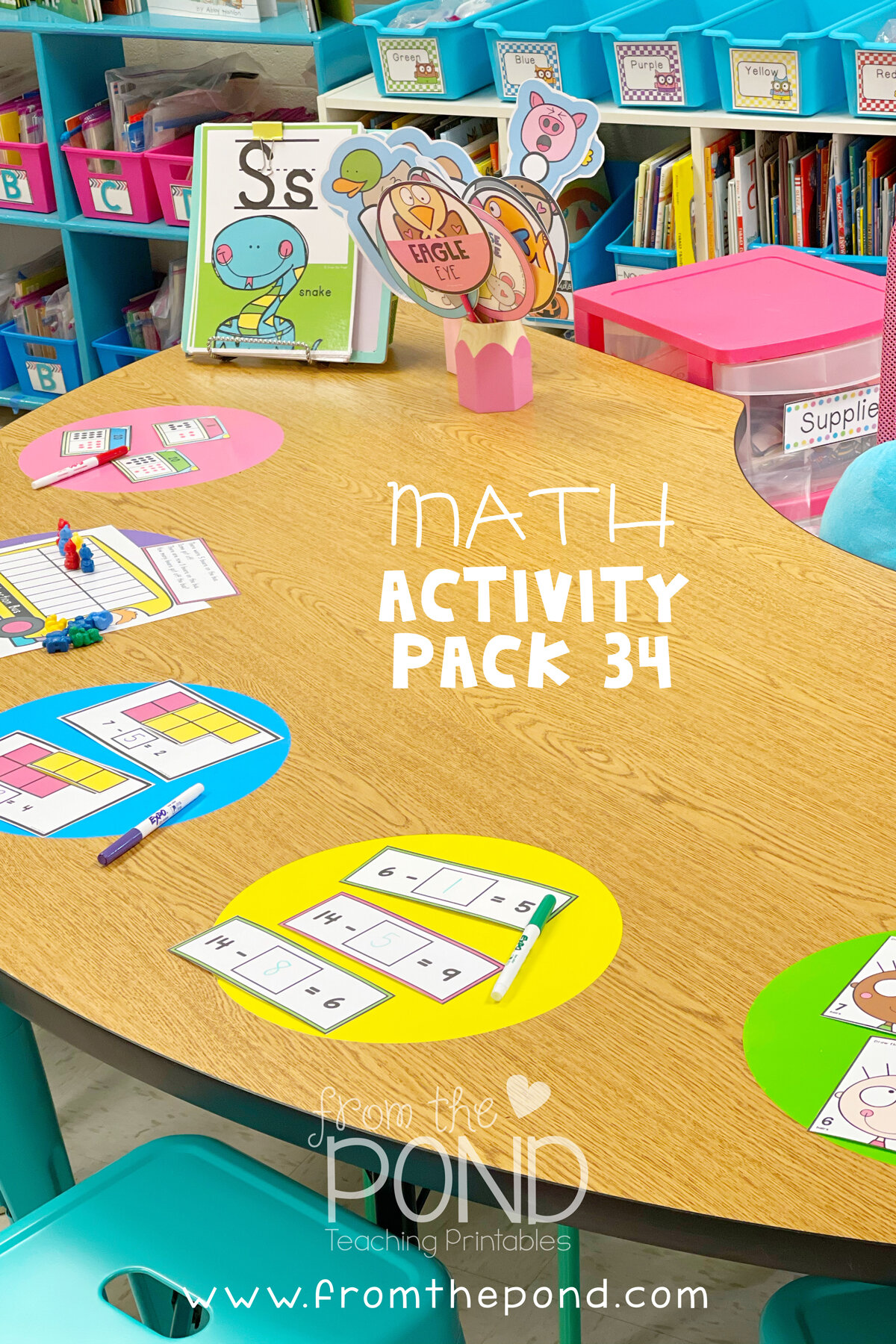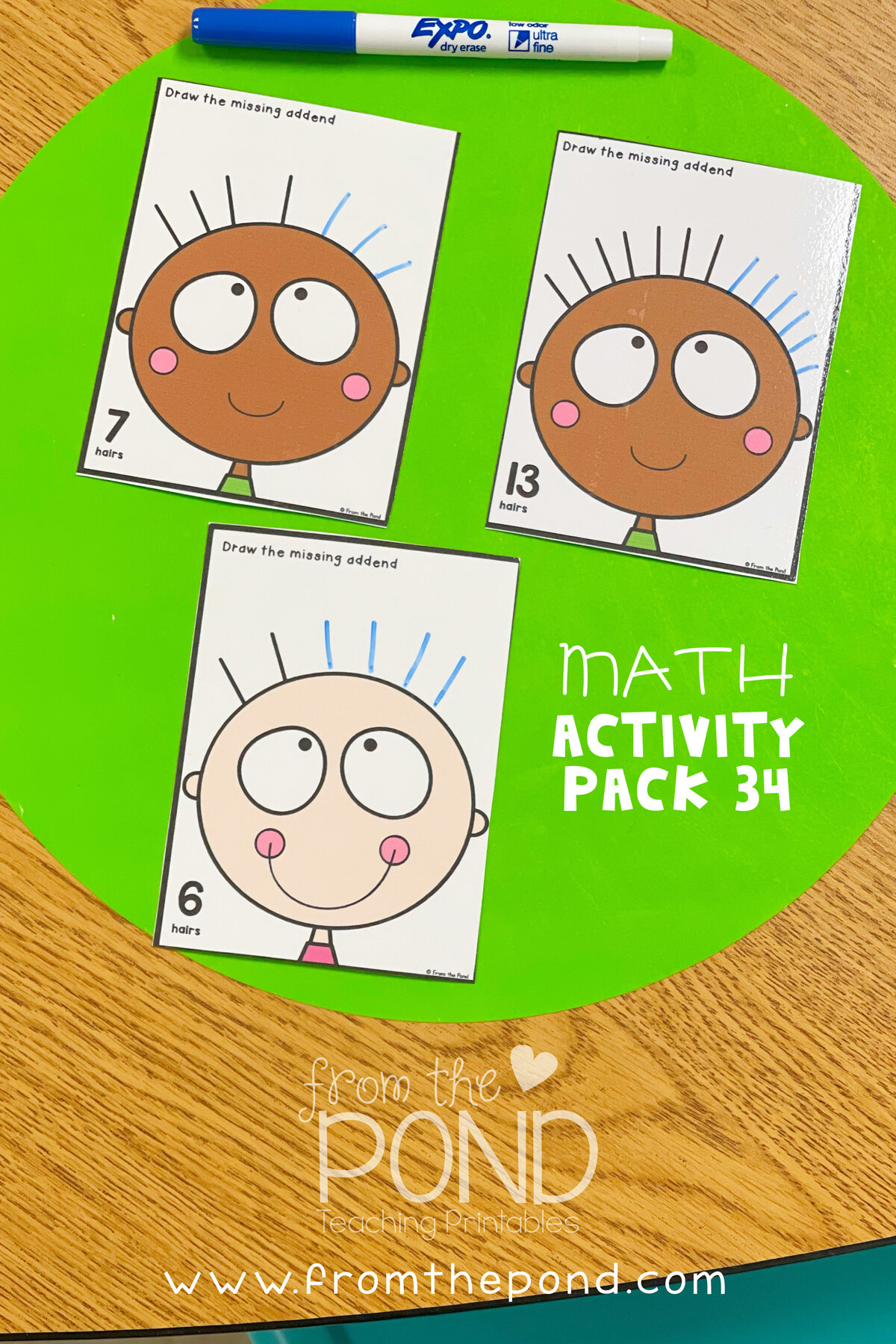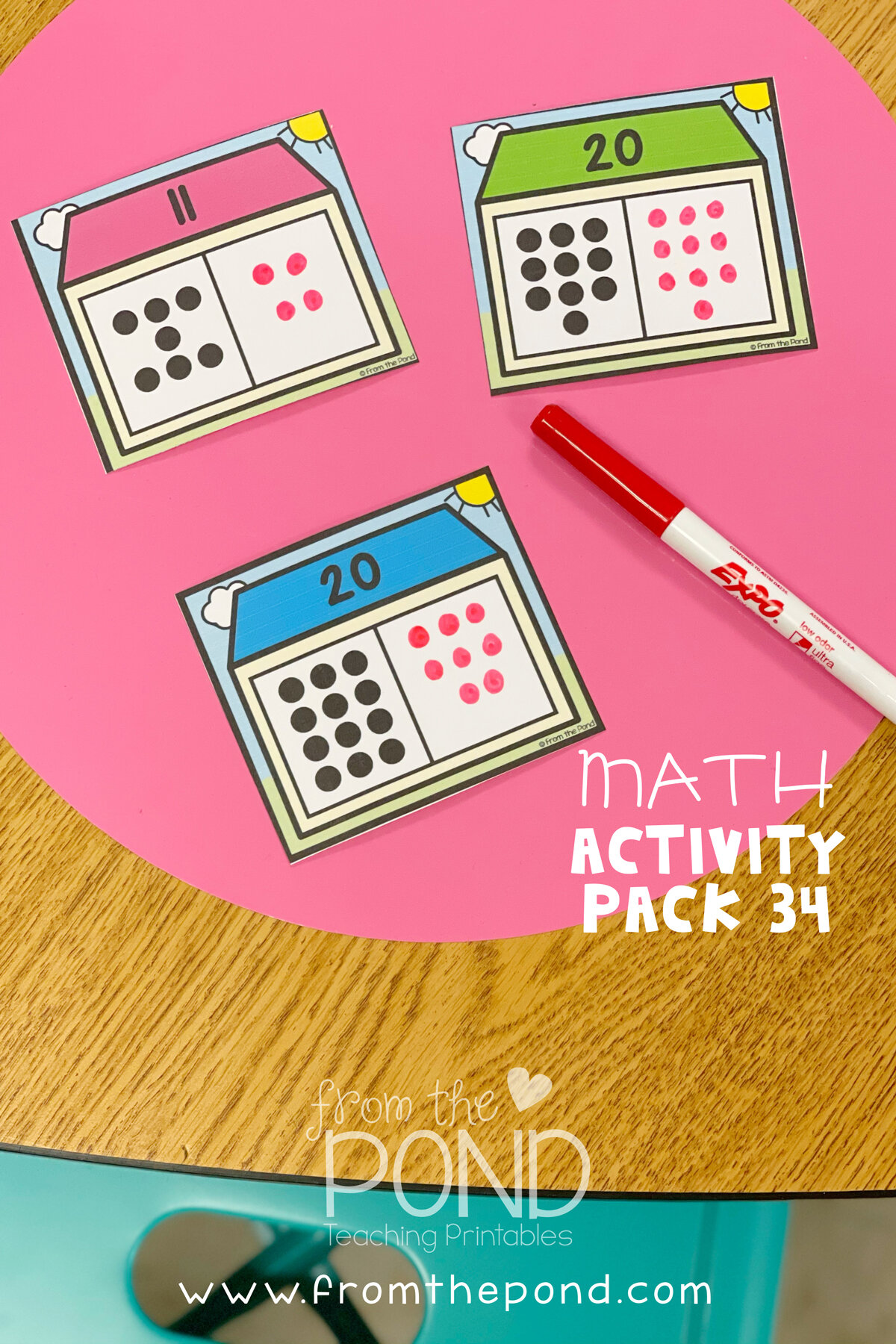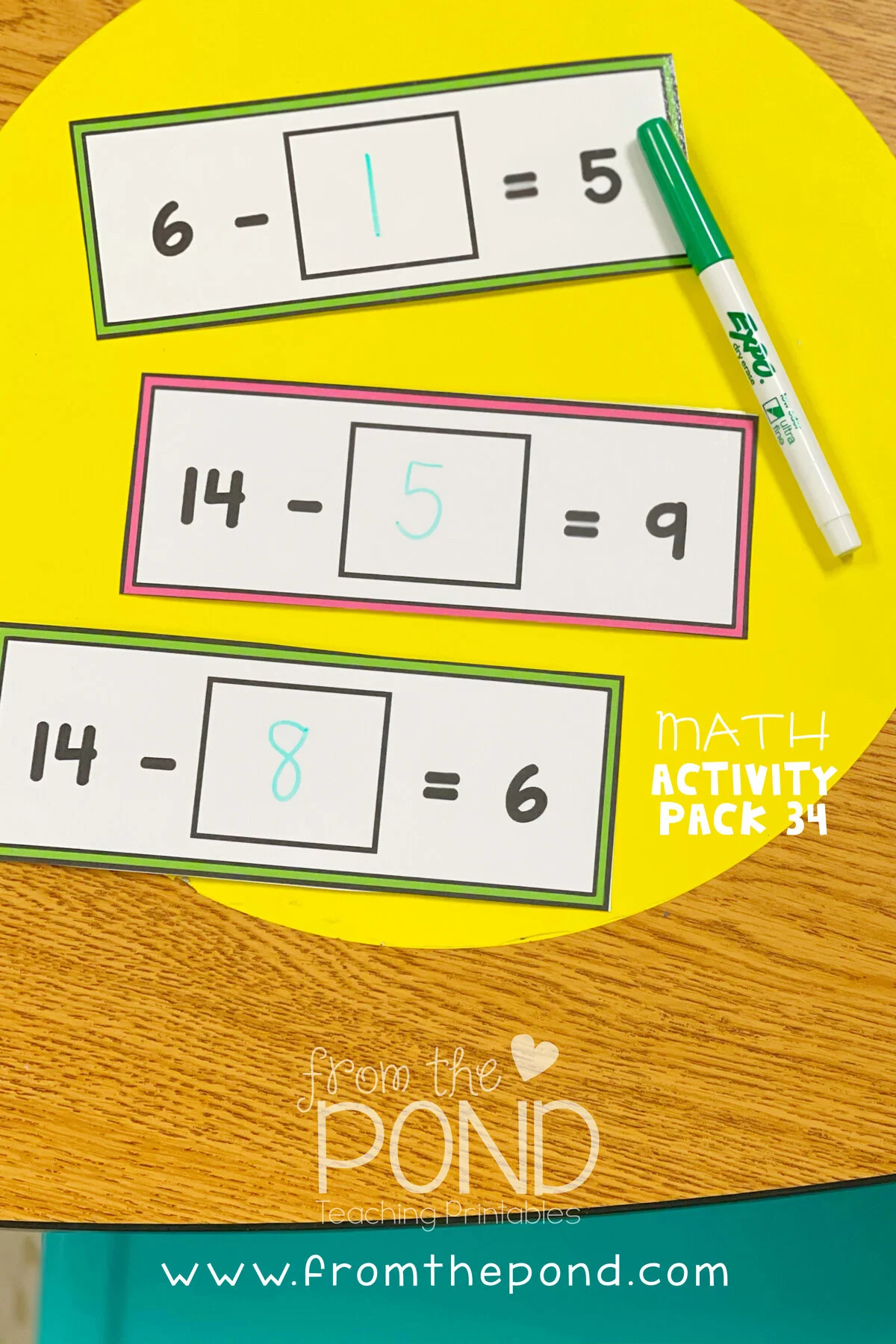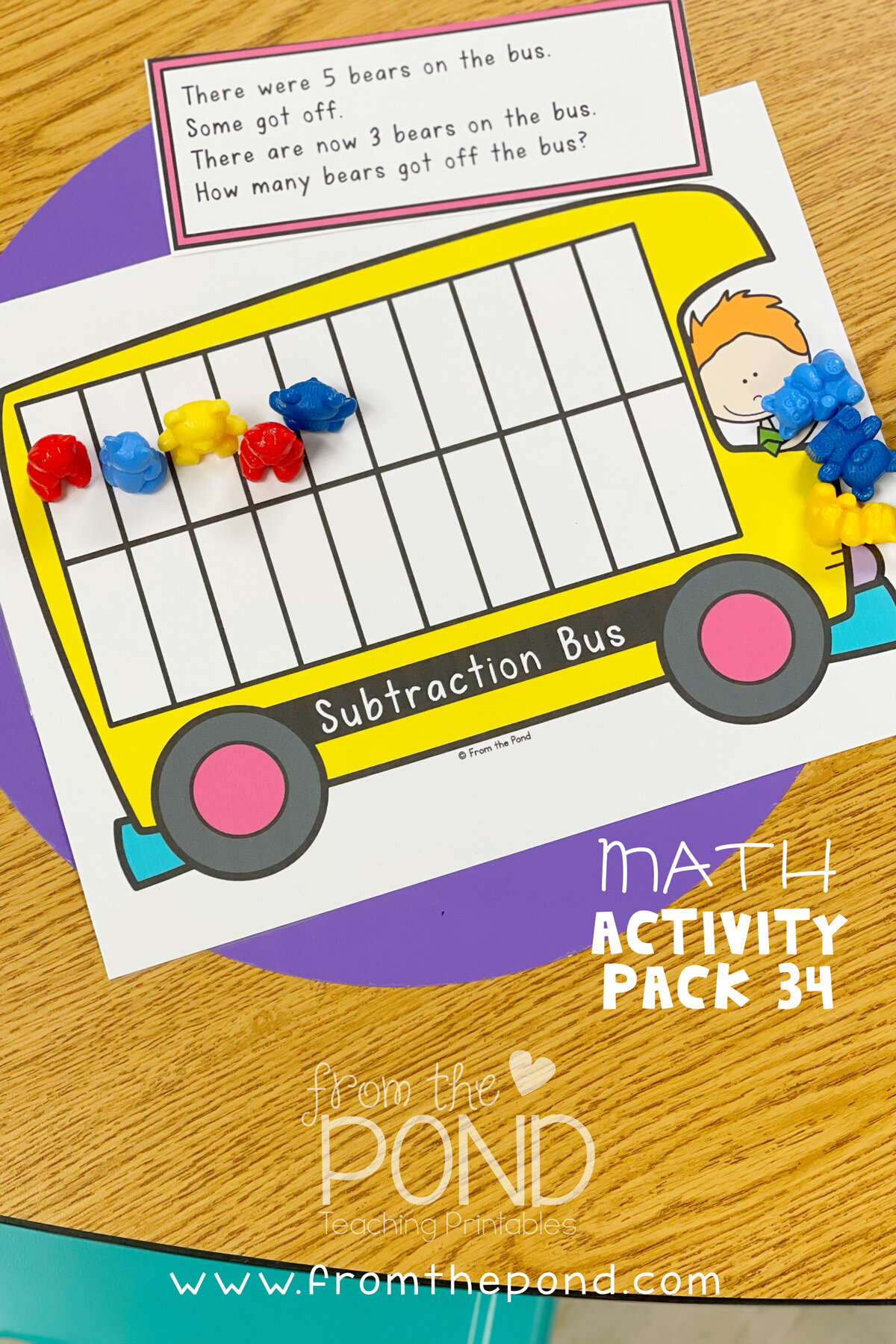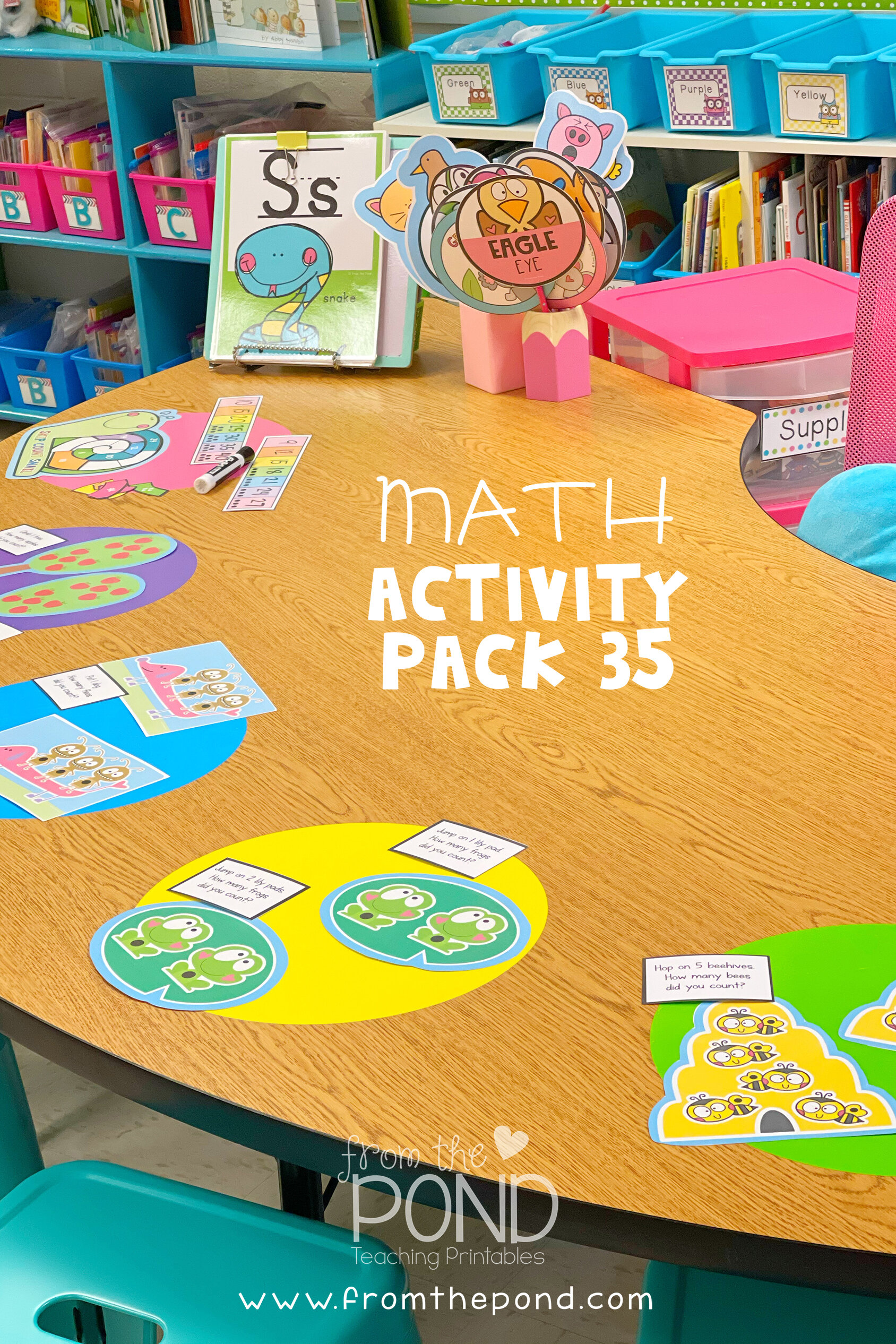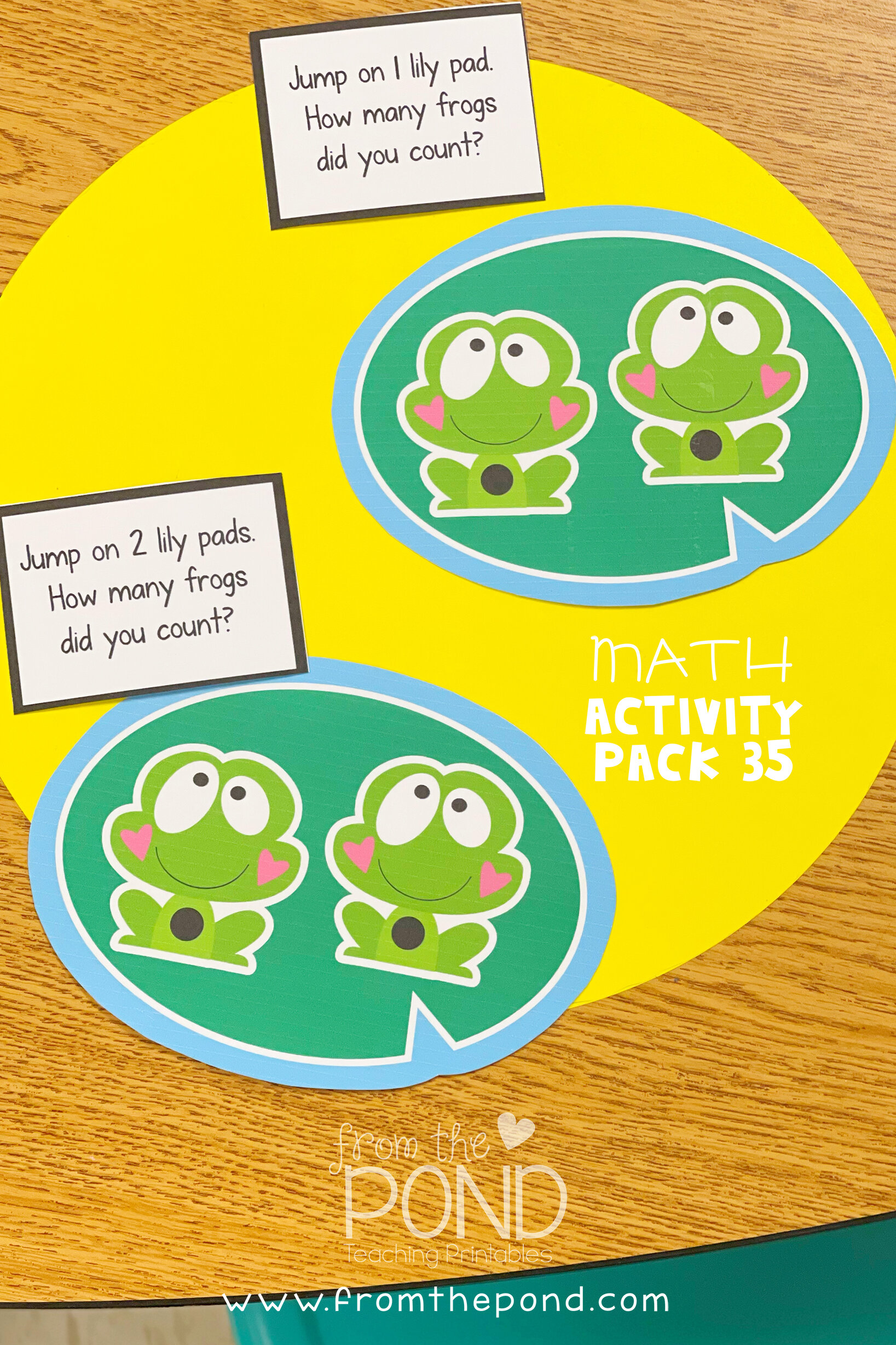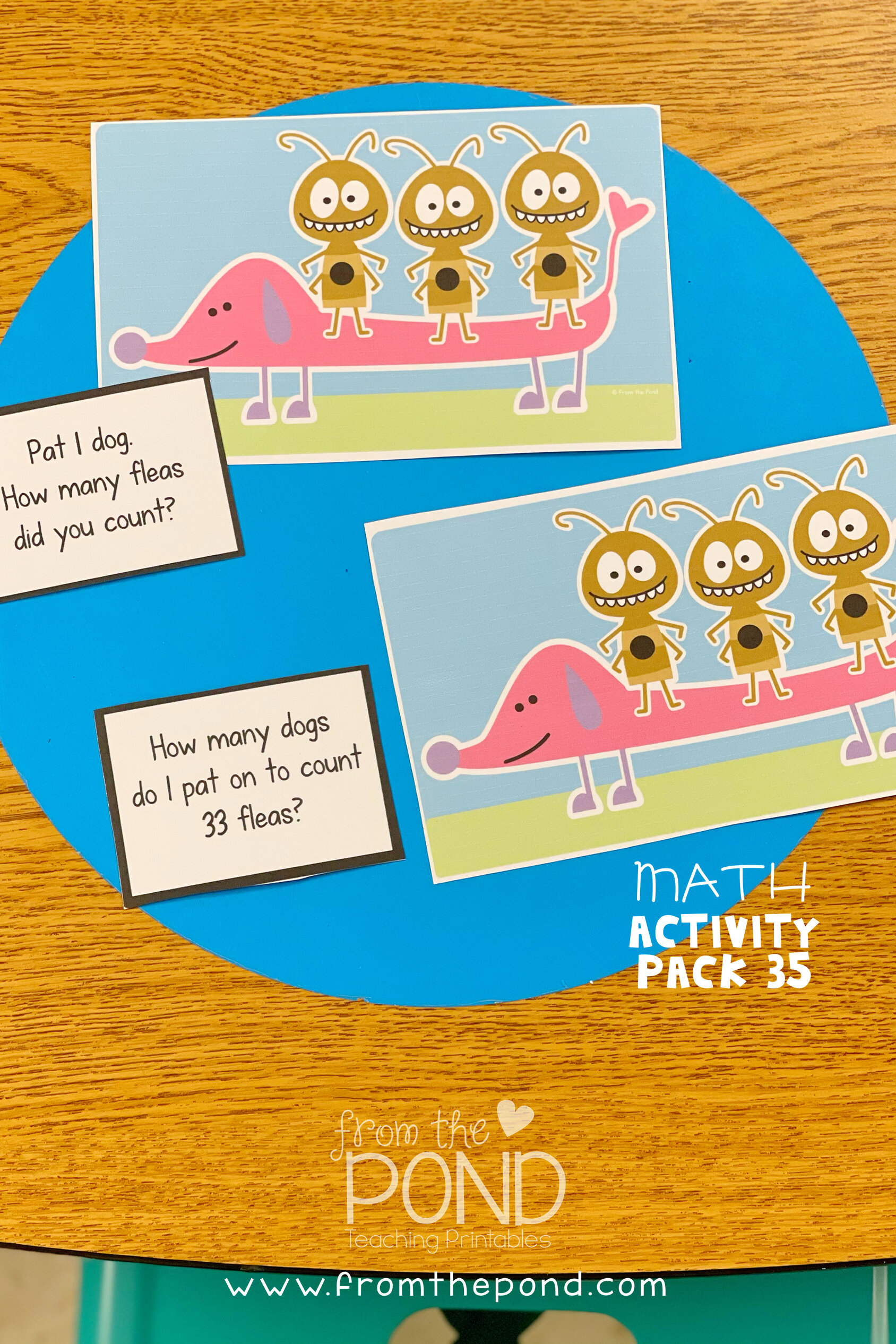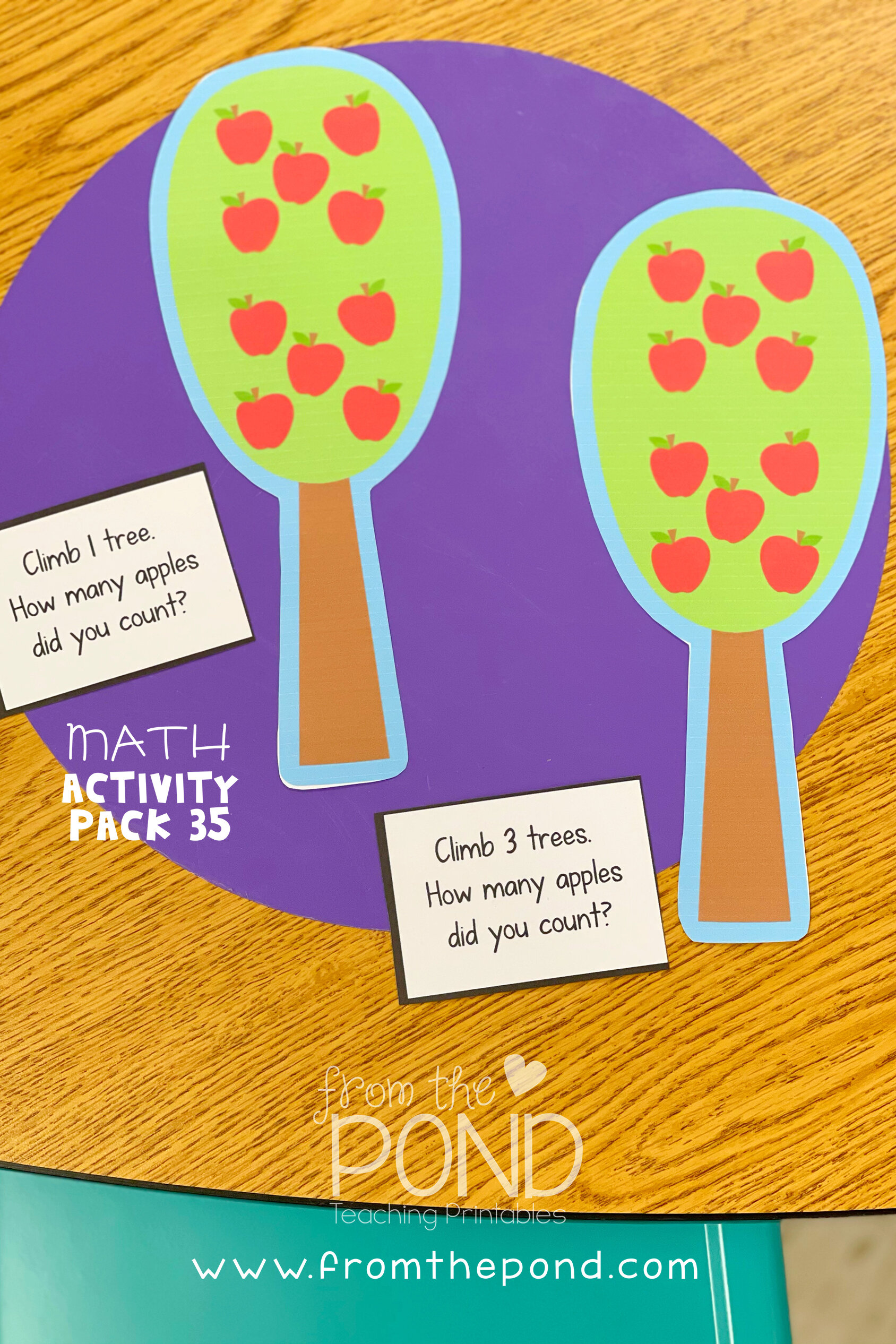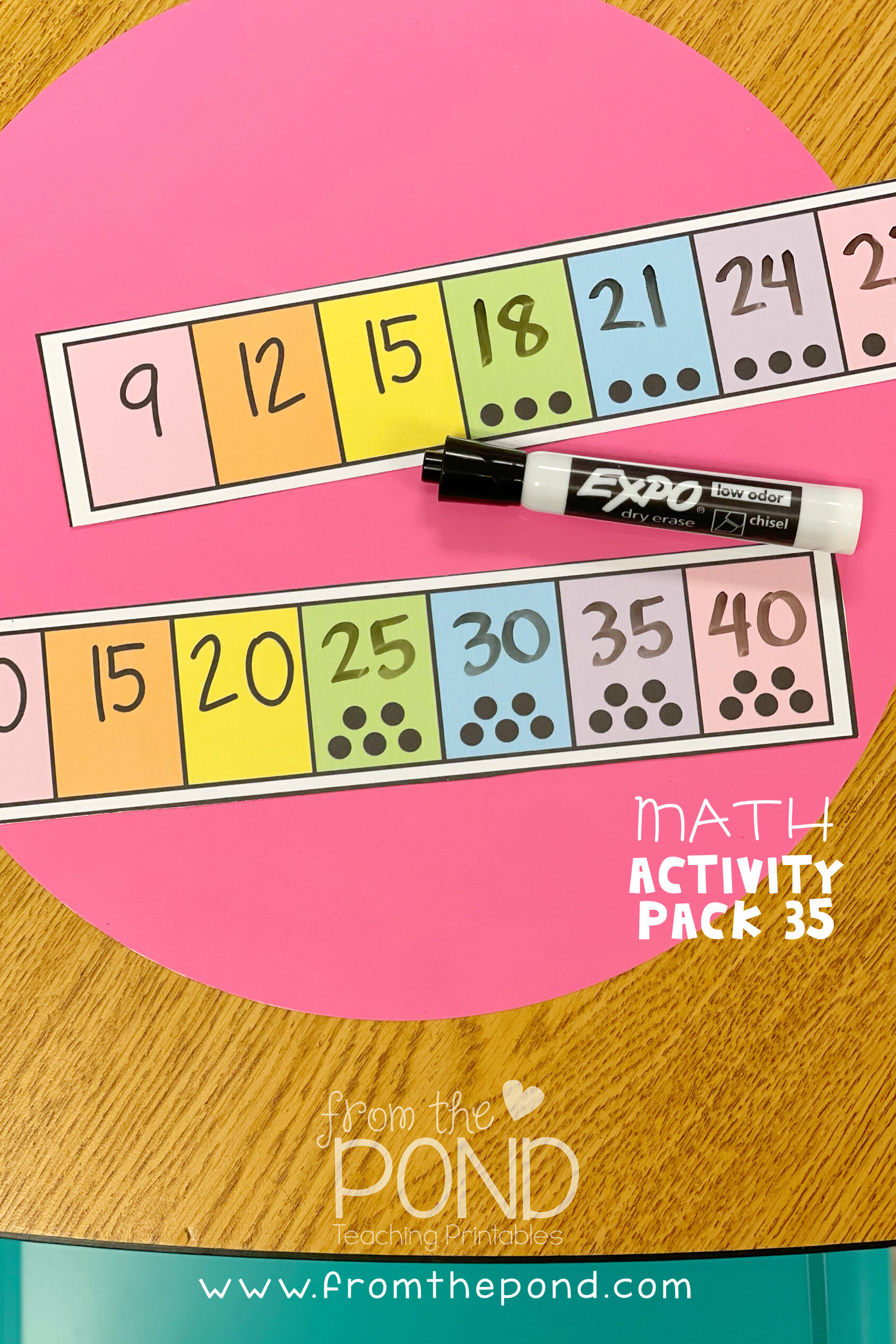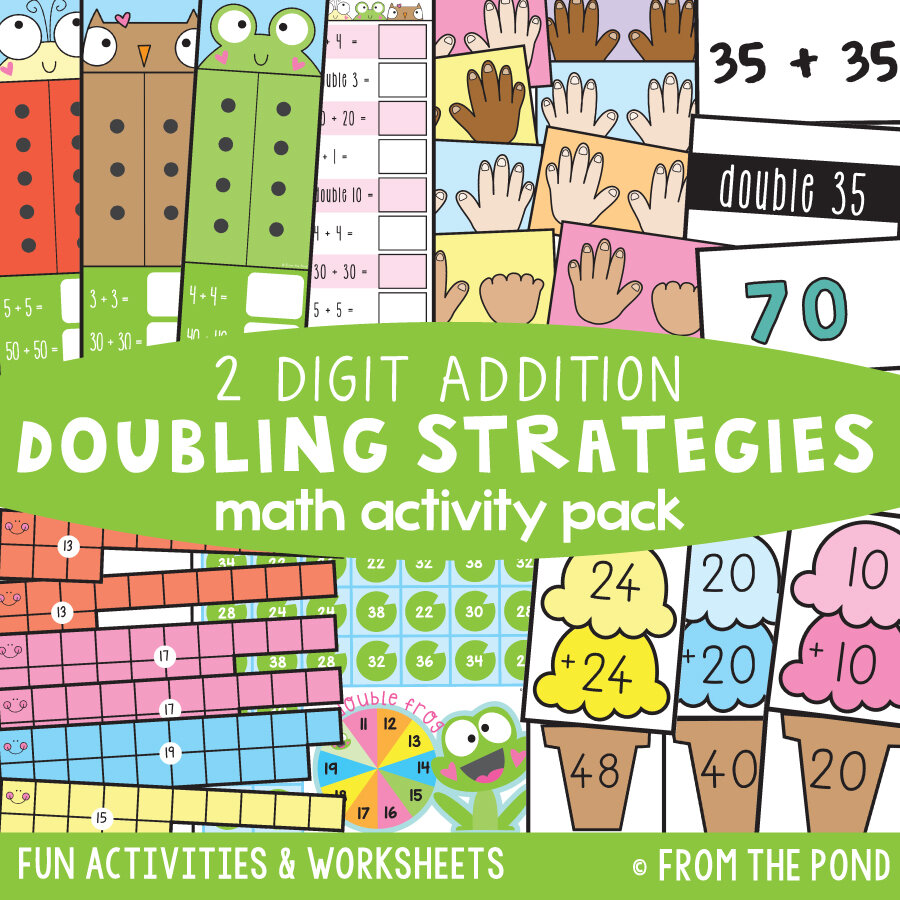First Grade Math Activity Packs
Time to Match
match digital time clocks with analog clocks, for hour time
Time for Ice Cream
match digital time clocks with analog clocks, for hour time
Time Frog
explore elapsed time (duration) by adding 1, 2 or 3 hours to an analog time and recording it as a digital time
Half-Timebot
explore time to the half hour by matching analog clocks with words and digital times
Owl Time
position hands on the owl clocks to make half-hour times
Robot Tens and Ones
group objects into tens and partition tens and ones
Expander
make groups of tens and ones
partition tens and ones
record a 2 digit number as tens and ones
Tens and Ones Train
make groups of tens and ones
partition tens and ones
record a 2 digit number as tens and ones
Frame It
make numbers by partitioning with ten frame pictures
Tens and Ones Bingo
recognize and identify pictures of partitioned numbers (place value blocks)
Snow Buttons
take groups of objects away to model 'take away' in subtraction
Bye Bye Bears
interpret pictures of subtraction situations
identify 2 parts and a total in subtraction
In and Out
learn that subtraction situations have 2 related subtraction facts.
Inside Outside
learn that subtraction situations can have 2 related subtraction facts and 2 related addition facts
Fact Cuties
identify and write the 2 addition and 2 subtraction facts for a fact family of 3 numbers
Number House
trace numbers to 100
Match It
match number words with numerals
Read and Write It
read number words and write the matching numeral
Number Street
write numbers in counting order, starting at random positions between 31 and 100
Number Words
trace or write number words to match numerals
Butterfly Doubles
recognize, solve and write double facts for facts up to 12+12
Near Double Bug
double numbers 1-9 and add 1 to find the total (double plus one strategy). Dot formation and numeral options provided
Double Towers
find and compare arrangements of squares (towers) that show doubles and near-doubles (doubles plus one). Students will build towers with blocks to match
Big Doubles
double multiples of ten (10-50) to find a total
Doubles Plus 2 Train
double numbers 1-9 and add 2 to find a total (double plus 2 strategy)
Count on by 2
count on by 2 with 2 digit numbers on a number track
Count on 10
use a hundreds chart to 'count on 10'
Count on Corners
count on by 1, 2, 10 and 20 with sections of a hundreds chart
Count on House
count on by 1 and 2 in both the ones and tens column of 2 digit number addition
Add it Up
count on by 1 and 2 in 2 digit addition algorithms
Addend Hair
draw more hair on each kid to show the missing addend
Addend House
identify the missing addend by looking at a known quantity and total
Missing Part
identify the missing addend by comparing a known quantity and total
Solve It
identify the missing subtrahends in a subtraction problem
Subtraction Bus
identify the missing subtrahends in a subtraction problem by reading a written subtraction story, interpreting it and modelling with plastic math bears
Frogs in Twos
count by 2s to find a total. Students will discover how many repeated counts of 2 will make a total
Beehive Five
count by 5s to find a total. Students will discover how many repeated counts of 5 will make a total
Fleas in Threes
count by 3s to find a total. Students will discover how many repeated counts of 3 will make a total
Apple Tens
count by 10s to find a total. Students will discover how many repeated counts of 10 will make a total
Skip Strips
skip count by 2, 3, 5 and/or 10 and start at different places in the sequence
Skip Count Snail
skip count by 2, 3, 5 and/or 10, start at different places in the sequence and use their knowledge of skip counting to position numbers in the sequence
Let's Compare
compare 2 numbers (overlay areas) to find the difference
Difference
compare 2 numbers (side by side) to find the difference
Compare Frame
use ten/twenty/thirty frame comparison to solve subtraction
Apple Snacks
compare 2 numbers (side by side) to find the difference
interpret a simple subtraction story to write a subtraction problem with numbers and symbols
Find the Difference
compare 2 numbers (side by side) to find the difference
interpret a simple subtraction story to write a subtraction problem with numbers and symbols
Making Ten
review the combinations that make ten - 5 and 5, 6 and 4, 3 and 7, 8 and 2, 9 and 1
Train Add up
find two numbers that easily make 10 or 20 and put them first in an equation
Fill a Ten
fill a ten frame before adding the rest to learn naturally, that bridging to ten is efficient and numbers 'near to ten' should be added first
Domino Dots
visualise sliding dots on a domino to make a ten before finding the total
Fact Cards
memorize some addition facts that relate to 'bridge to ten' strategy
Math Pack 38 - Early Division
Robot Split
split an array in 2 to divide
Equal Bus
make equal groups to divide
Apple Barrels
divide numbers into equal groups
Happy Steps
use a number line and equal units to skip count and divide
House of 4
divide by 4 and show a remainder
Math Pack 39 - Comparing and Sequencing Numbers to 100
Biggest Number Bus
compare and identify the greatest 2 digit number in a selection of 3 numbers
Robot Place
make a 2 digit number and locate its position on a blank 100 chart
Skip Pattern
make a pattern of numbers on a hundreds chart by counting by 2, 5 or 10
Sequence Kids
sequence numbers in a 1 more, 1 less, 10 more, 10 less arrangement
Count Back Cats
count backwards by 2, 5 or 10 from a variety of starting positions
Math Pack 40 - Count Back Strategy for Subtraction with 2 Digit Numbers
Count on by 2
count back by 2 with 2 digit numbers on a number track
Count Back 10
use a hundreds chart to 'count back 10'
Count Back Corners
count back by 1, 2 and 10 with sections of a hundreds chart
Count Back House
count back by 1 and 2 in both the ones and tens column of 2 digit number subtraction
Add it Up
count back by 1 and 2 in 2 digit subtraction algorithms
Math Pack 41 - Doubling Strategies for 2 Digit Addition
Think Doubles
Students will count back by 2 with 2 digit numbers on a number track
Doubles with Five
Students will use pictures of hands to model 2 digit addition that involve 5 units - and partition these separately to double and find the overall total.
Teen Double
Students will use number cards and build towers with connecting cubes to model doubling teen numbers by partitioning into tens and ones.
Frog Double
Students will fluently double teen numbers using mental strategies.
Double Scoop
Students will double 2 digit numbers up to 50 (totalling no more than 100) using mental strategies
Math Pack 42 - Fractions - Working with One Half
Equal Parts
Students will identify and sort 2D shape pictures that have equal and unequal parts.
Blackline shapes available too so you can allow students to cut and fold from paper if desired.
One Half
Students will identify and sort 2D shape pictures that show one half.
Half for Dinner
Students will spin a number, build a collection and then divide it into 2 equal groups to find one half.
Half the Cookies
Students will find half of a collection by drawing a circle around half of the cookie sheet/tray.
Halfway Cards
styles of cards provided (trains, buses, number track). Students will write numbers in to show half on the number track.




